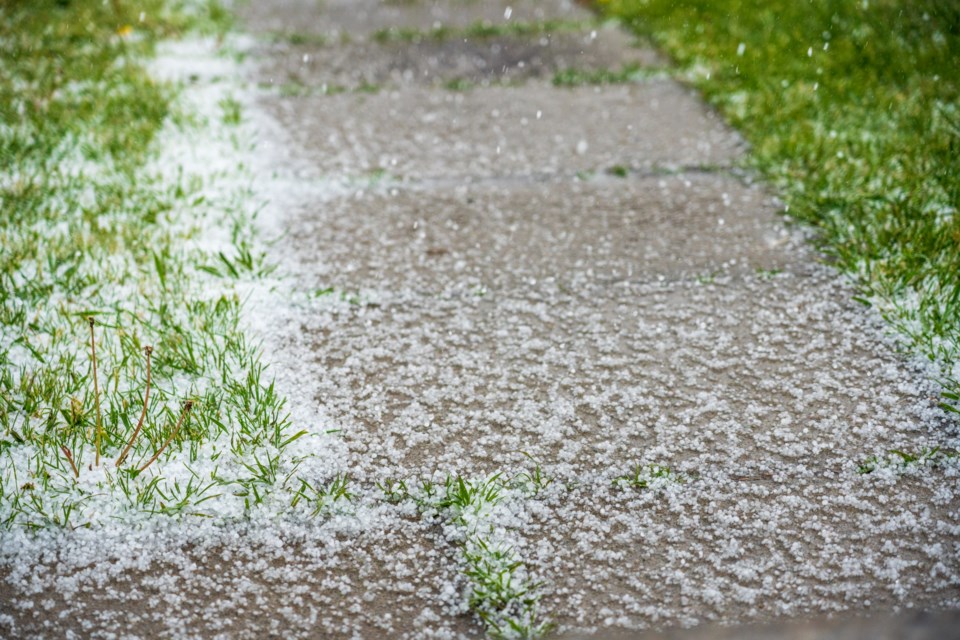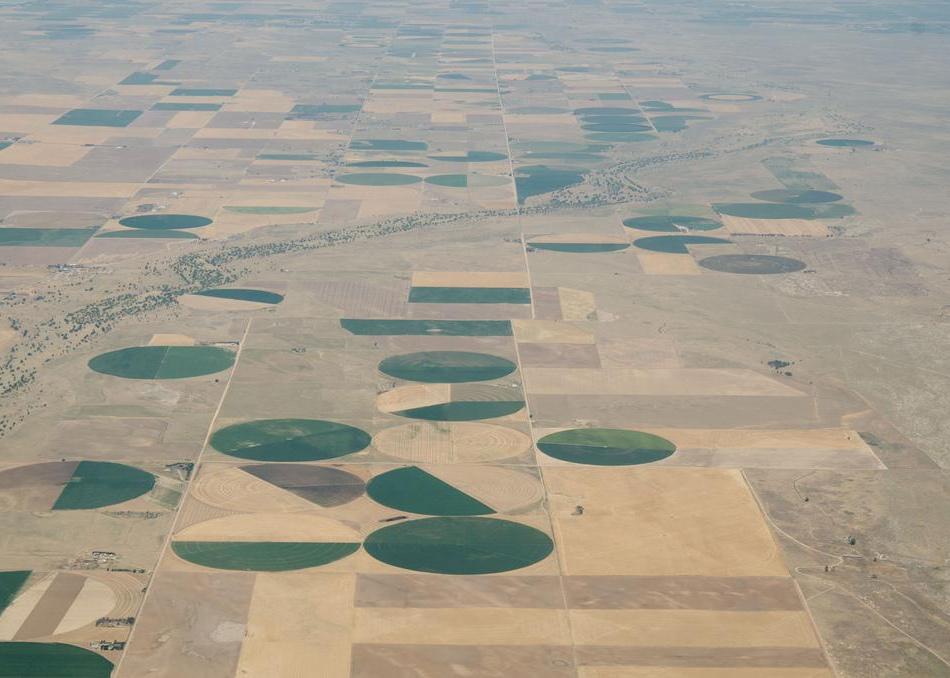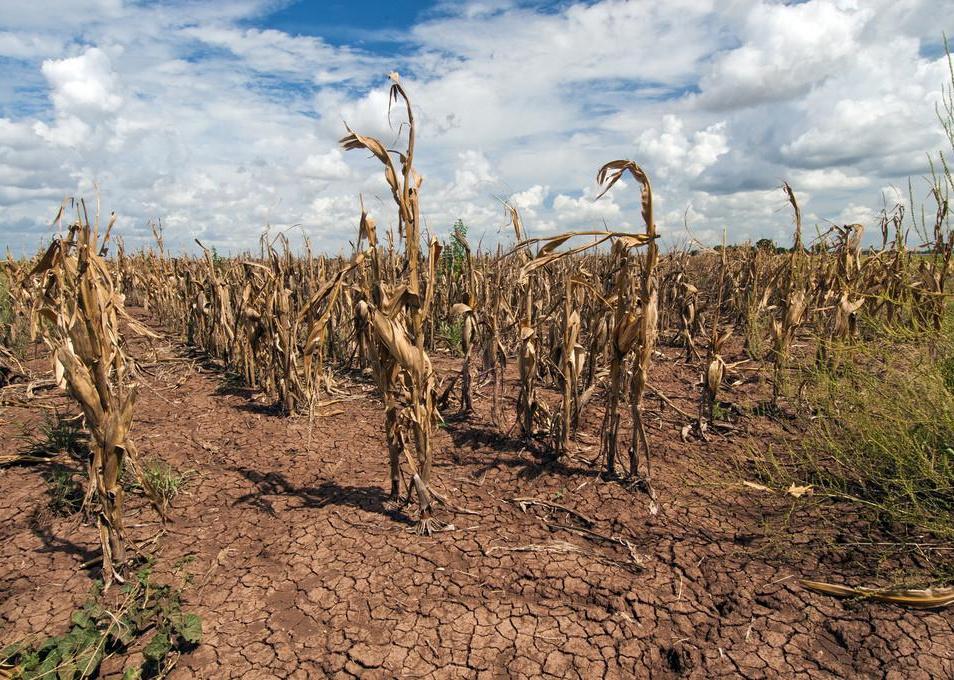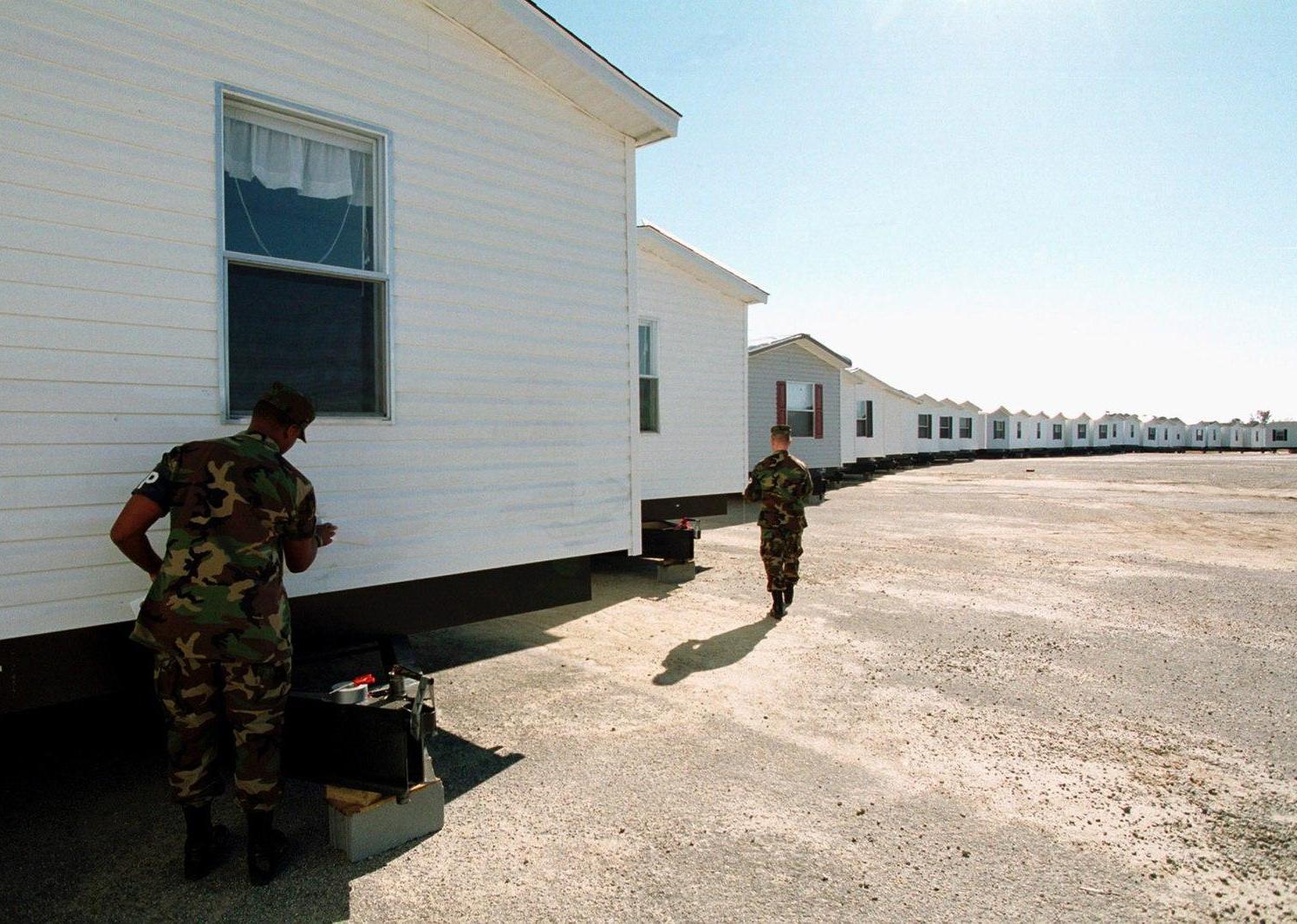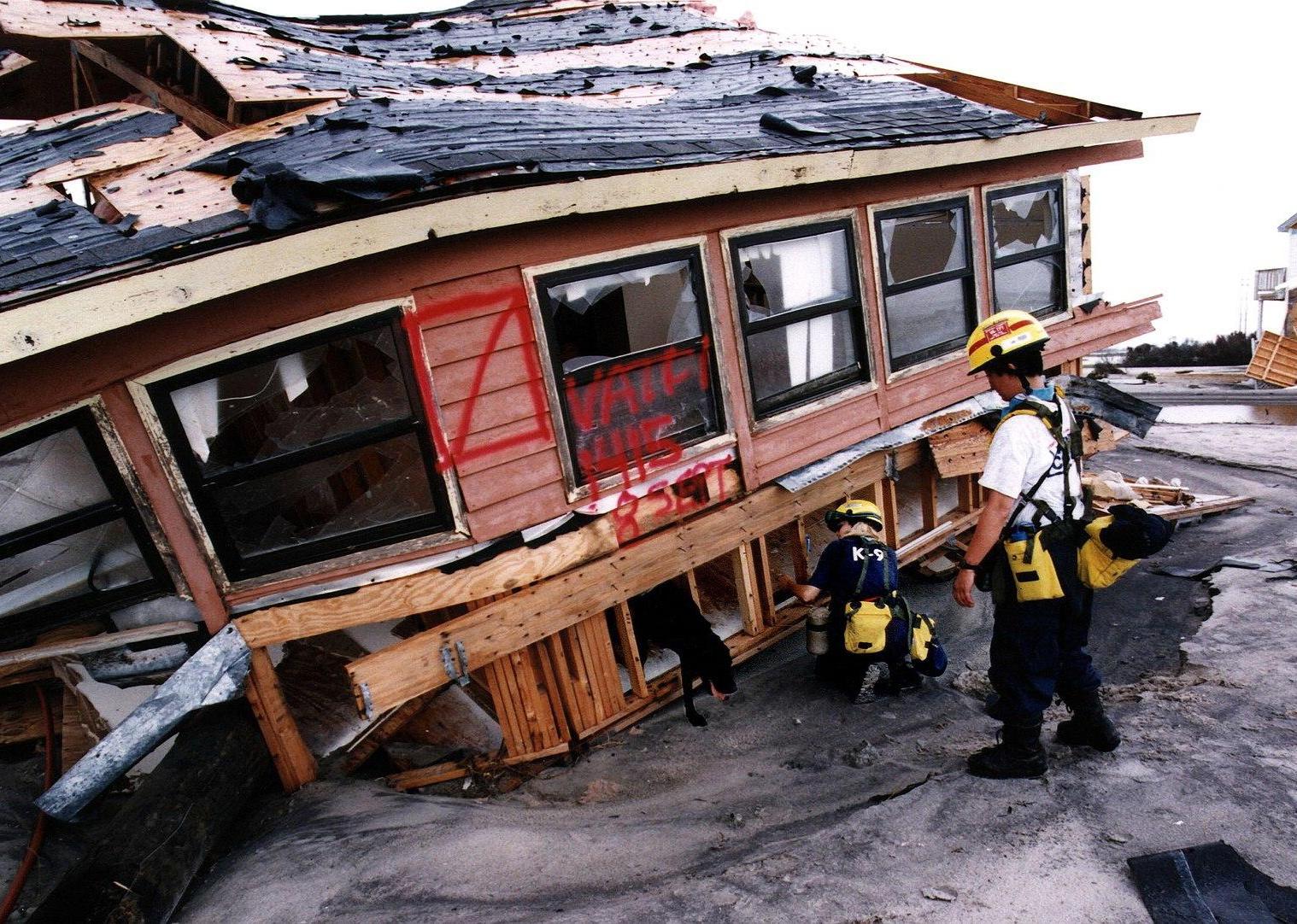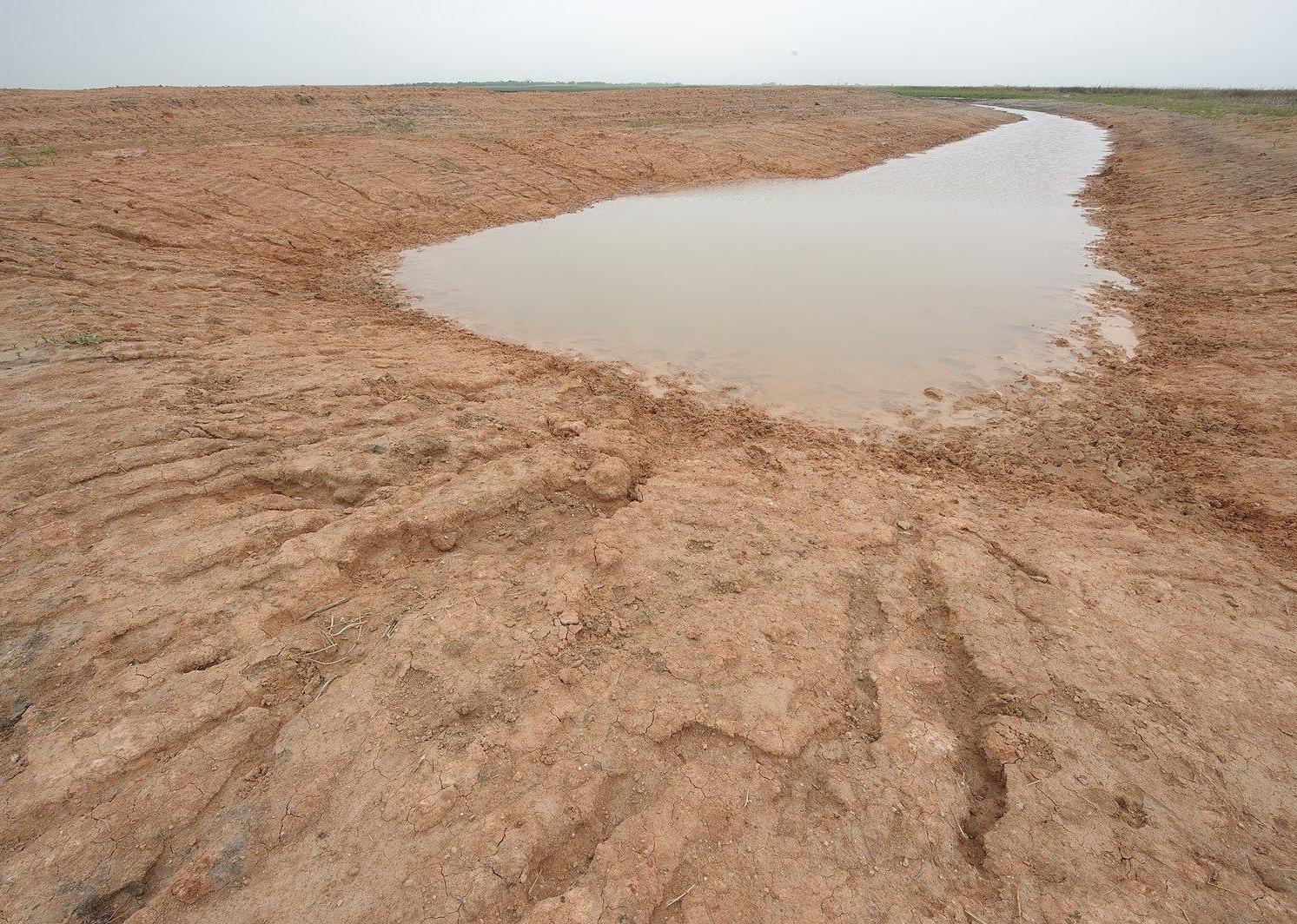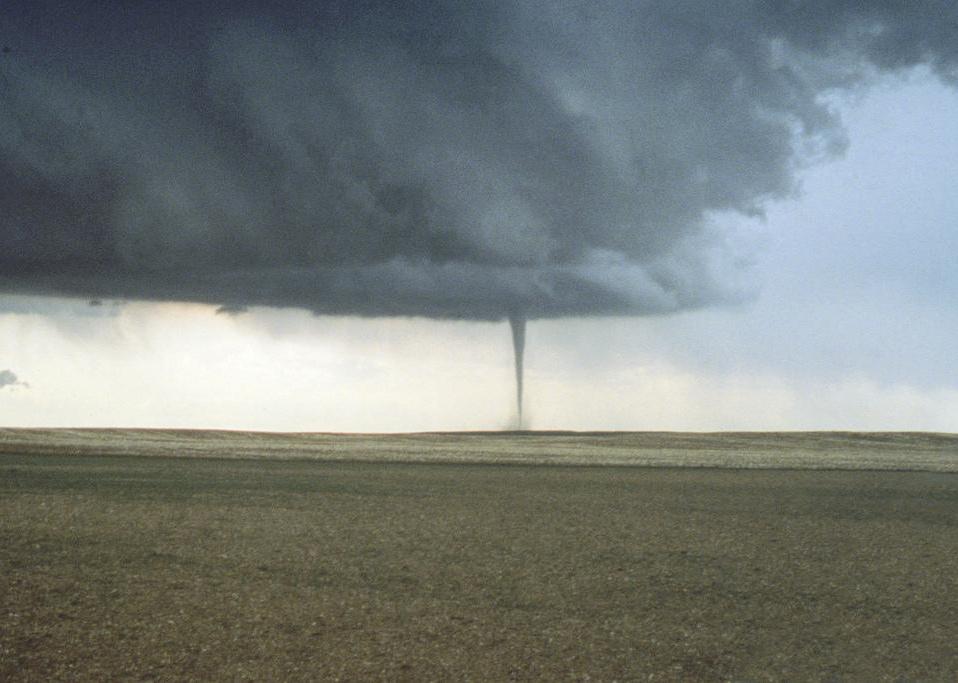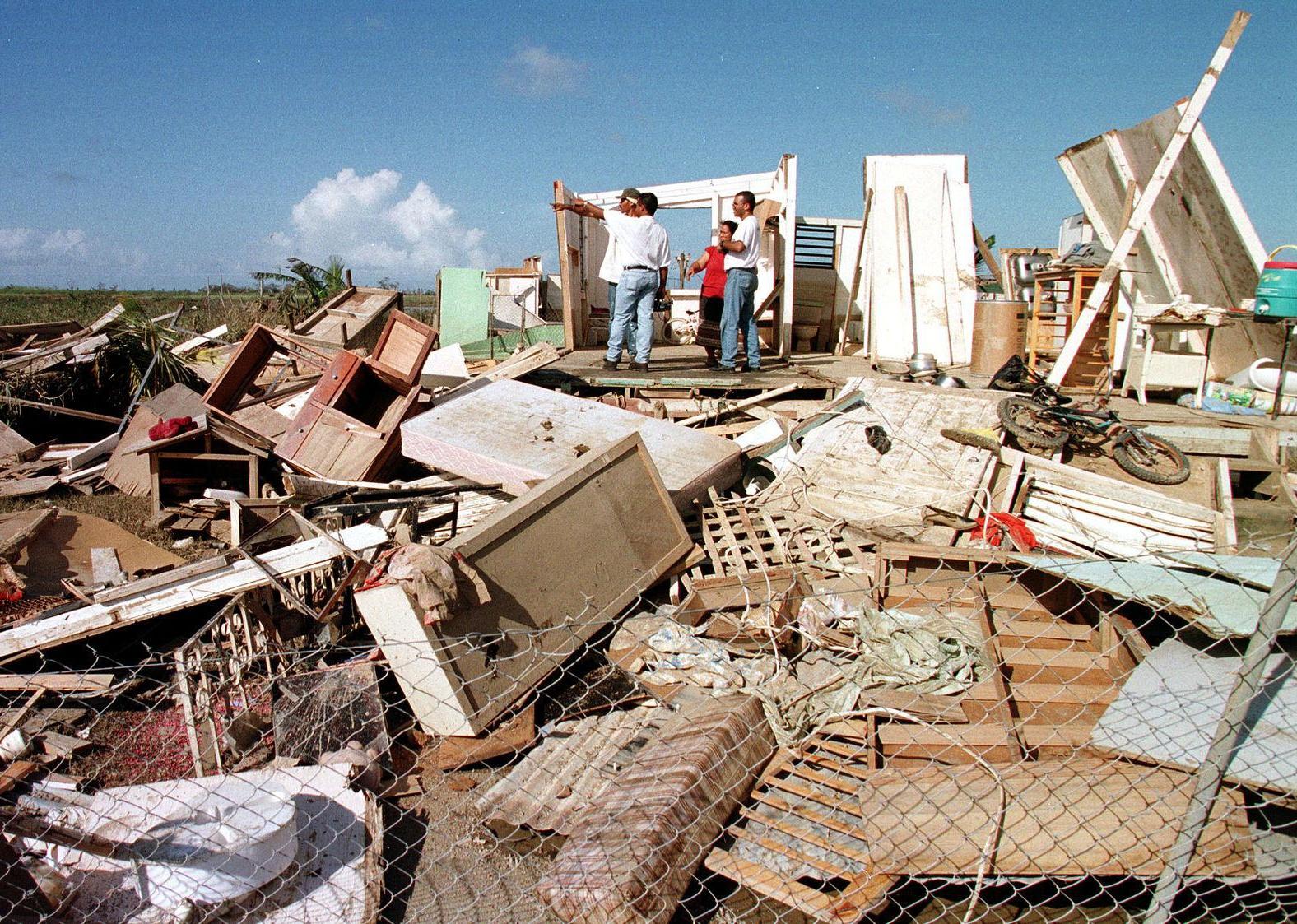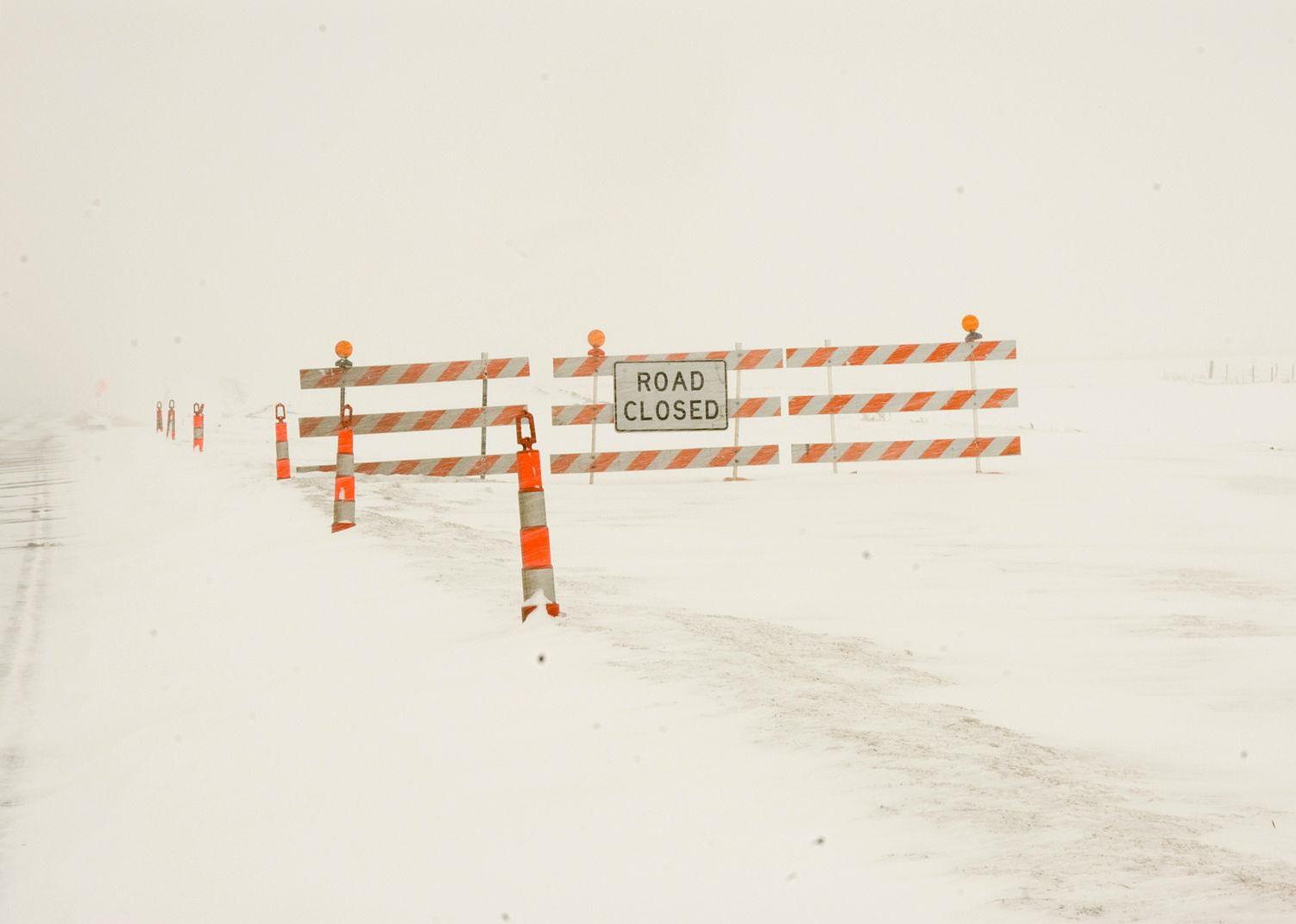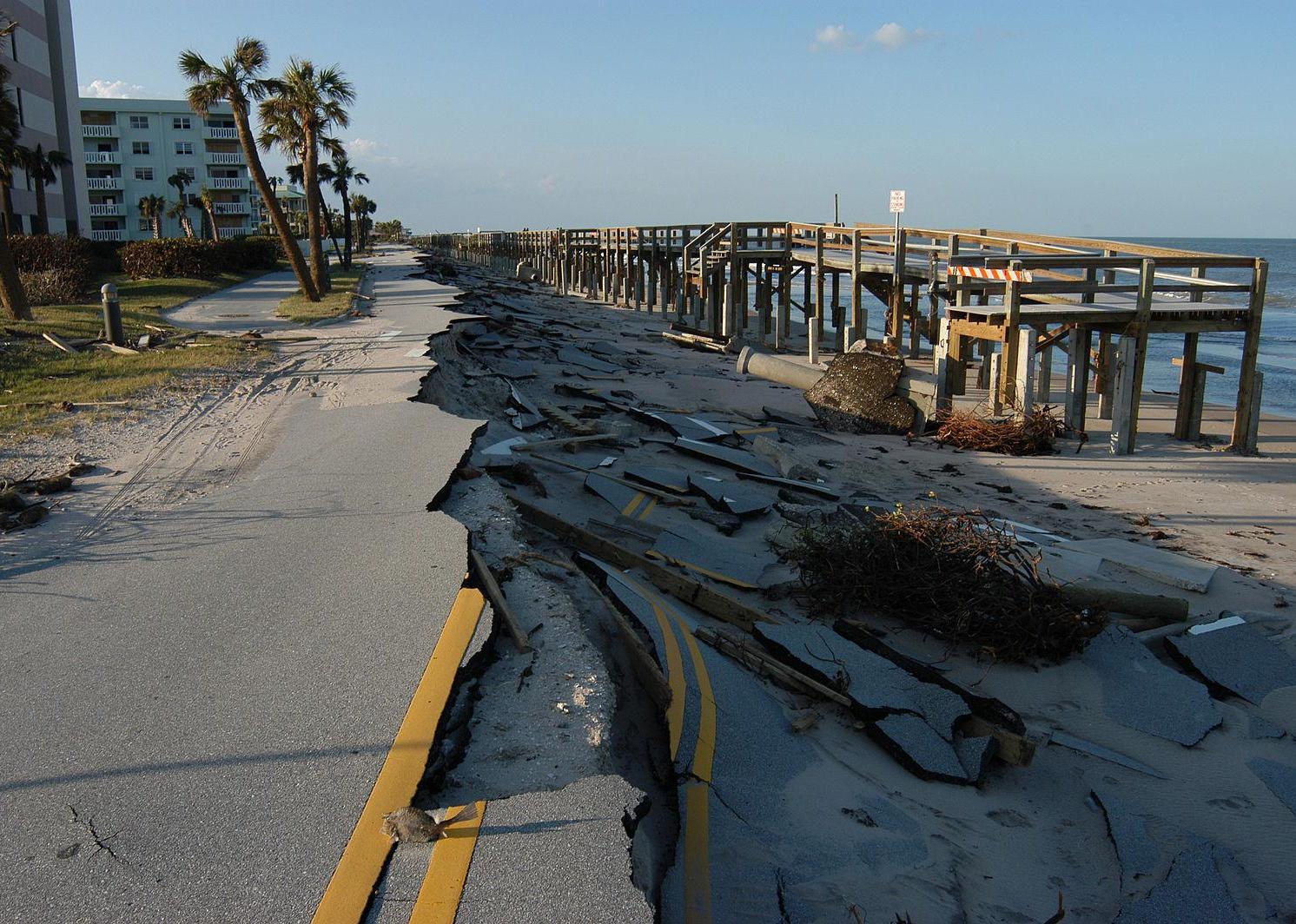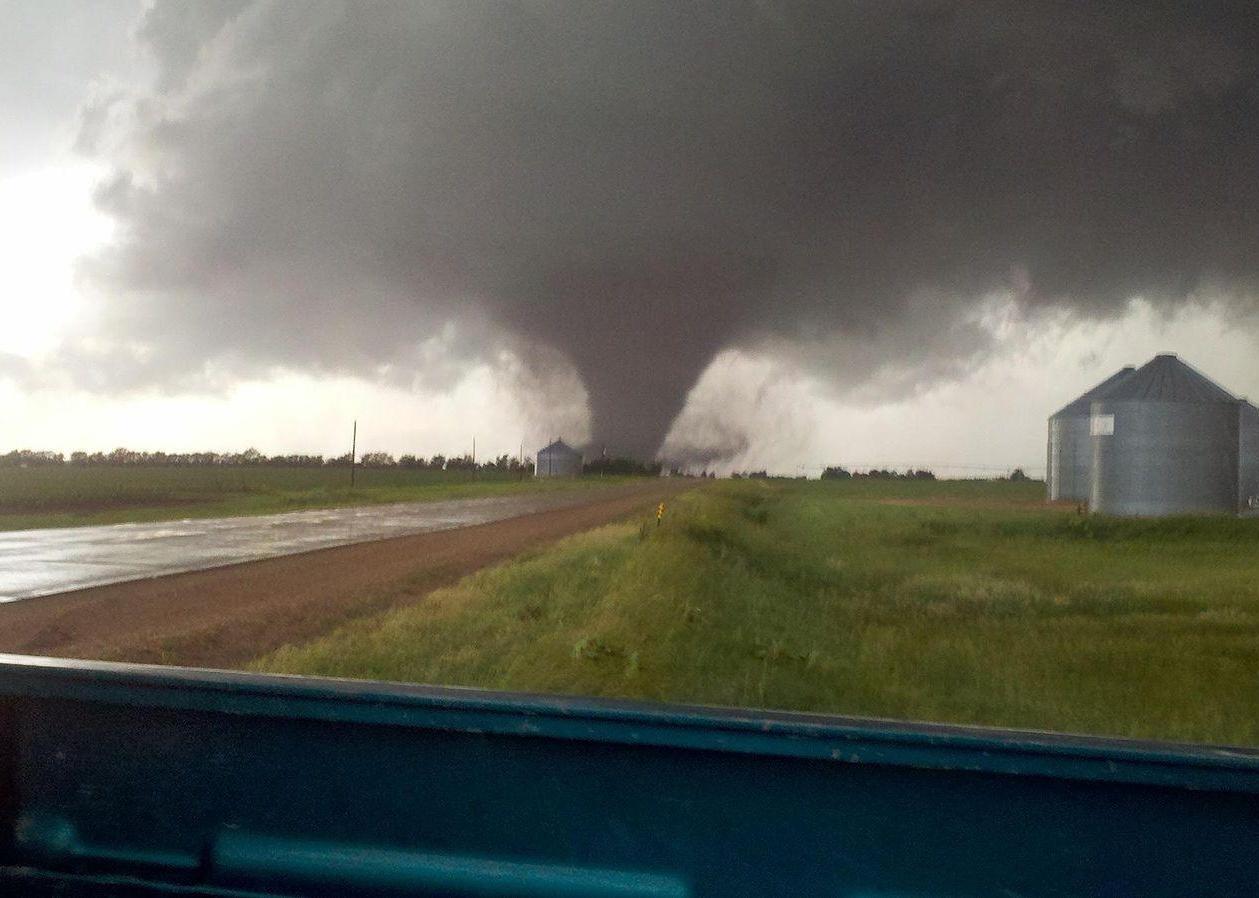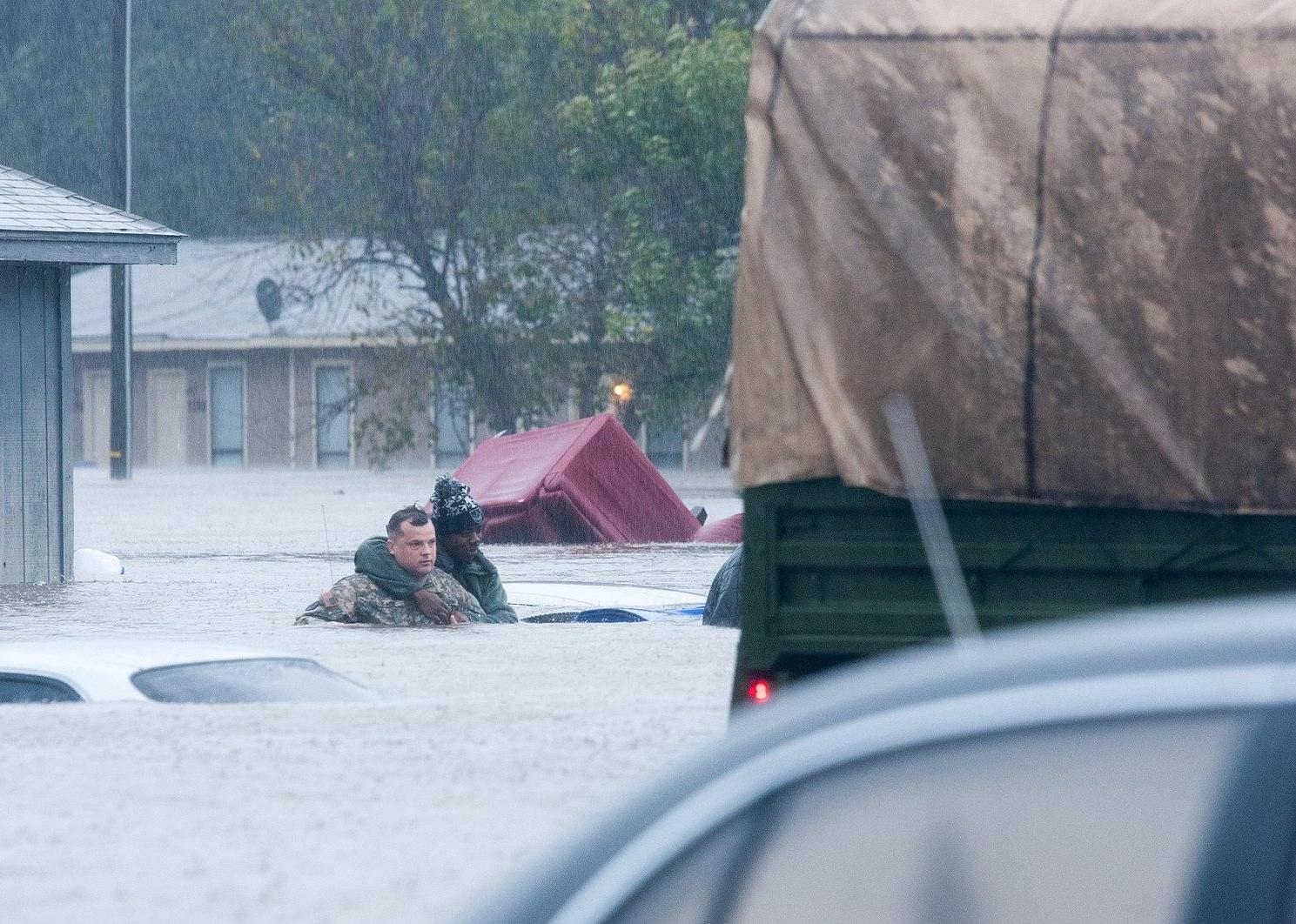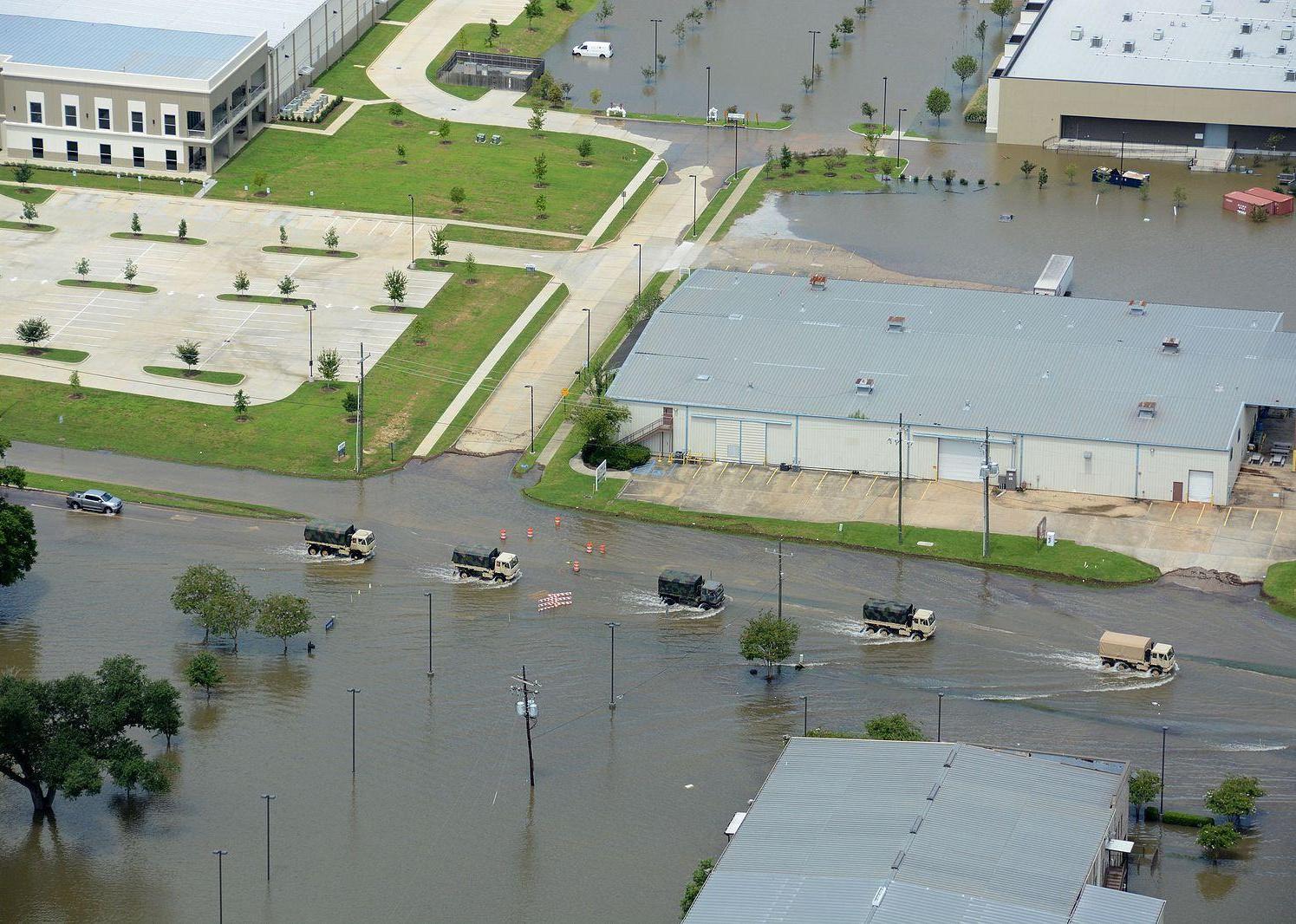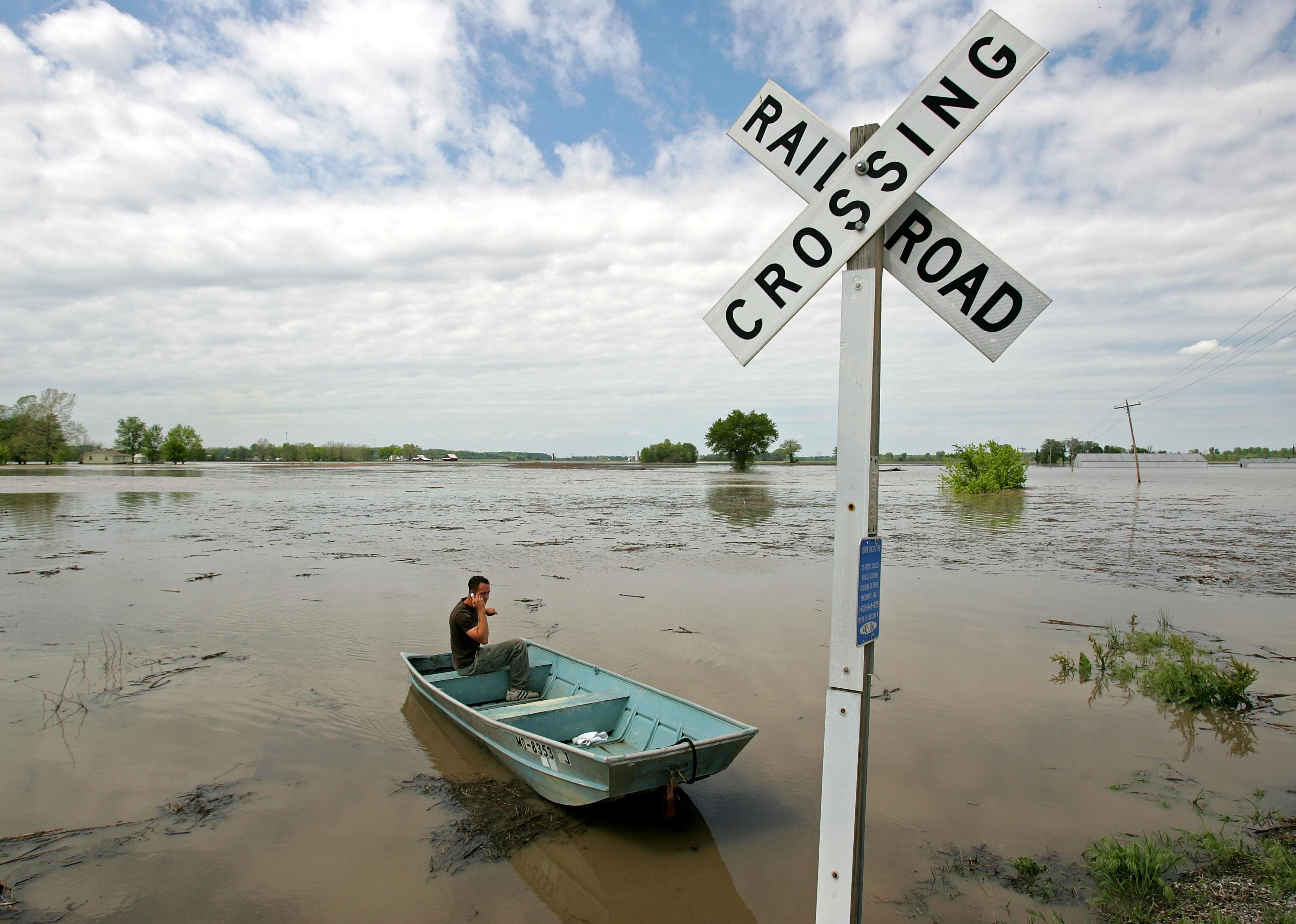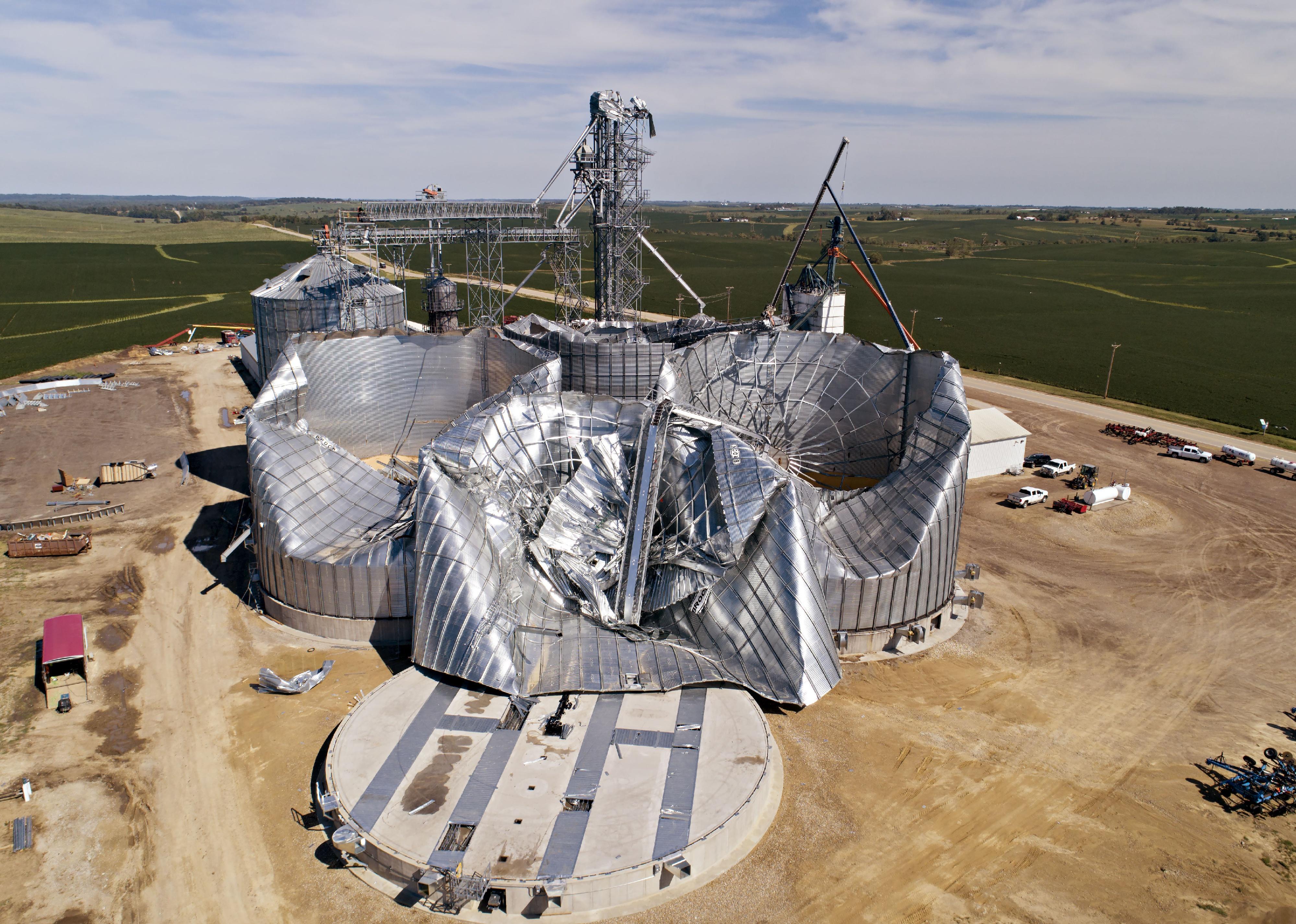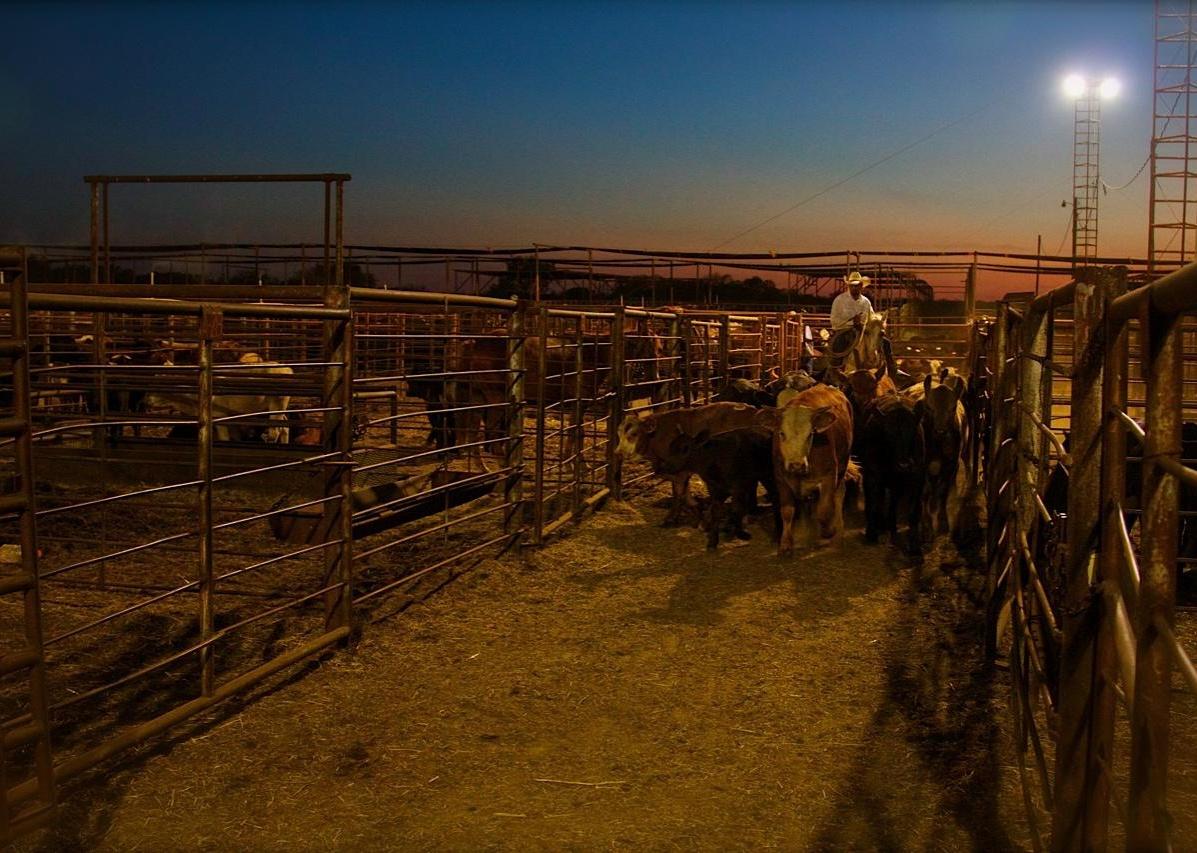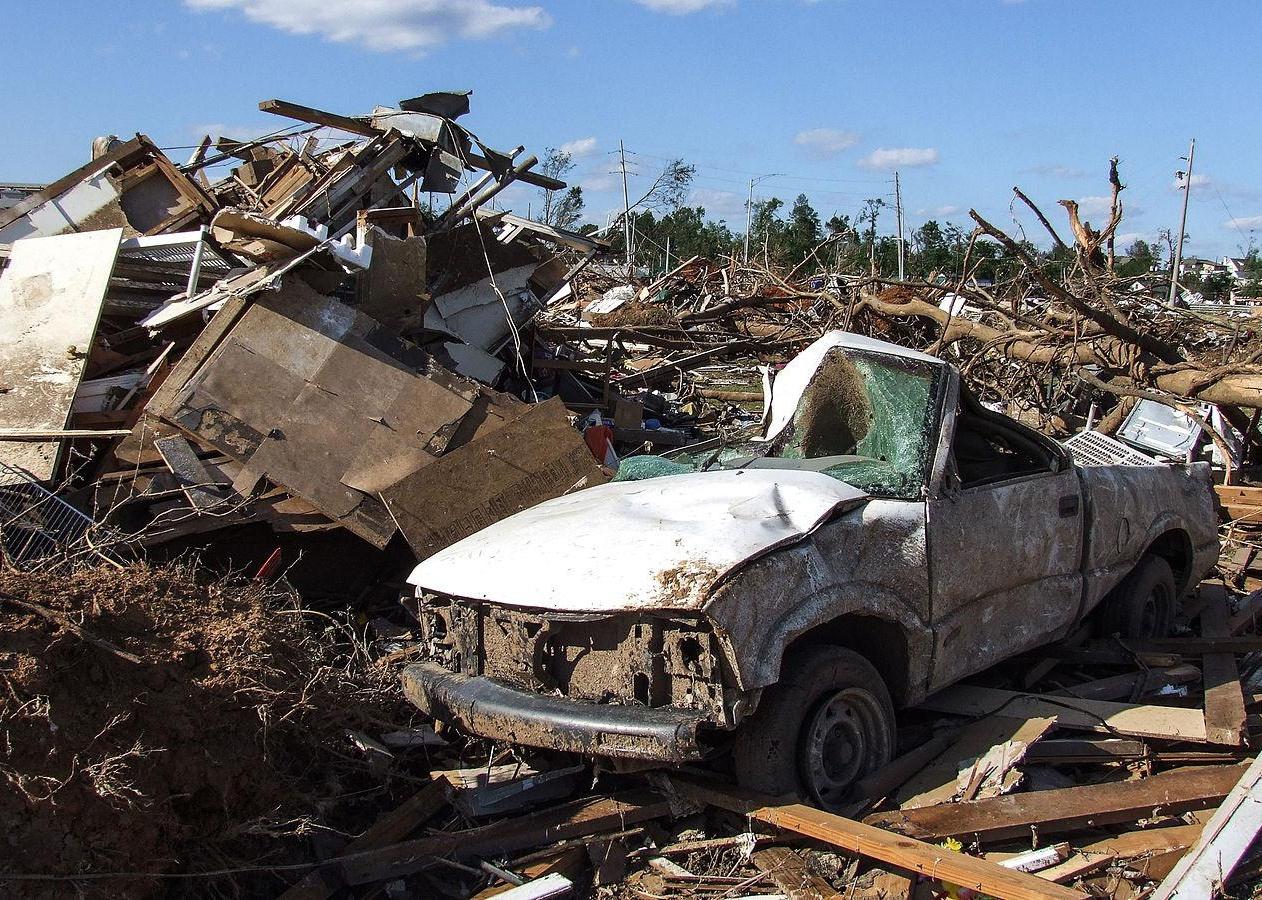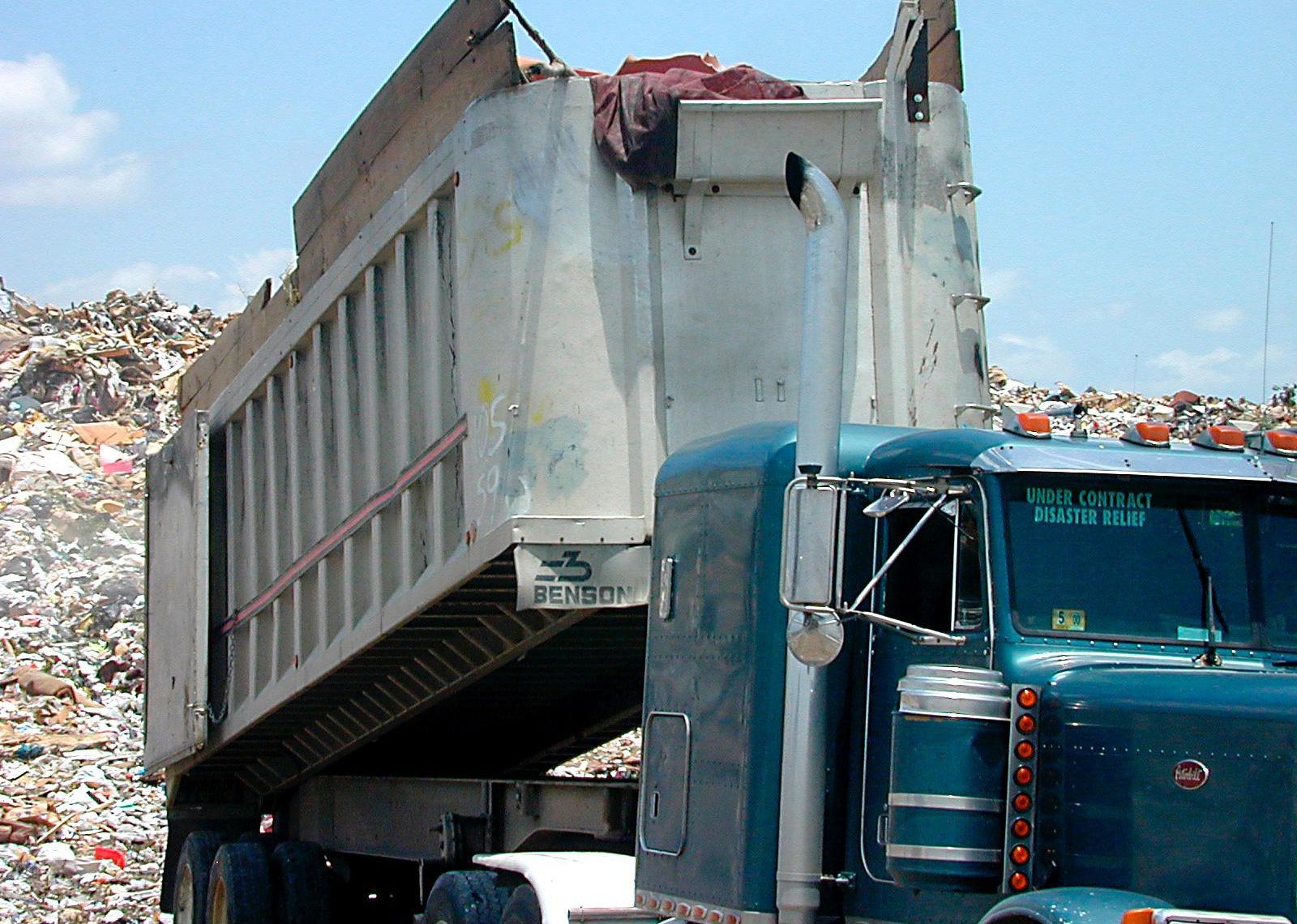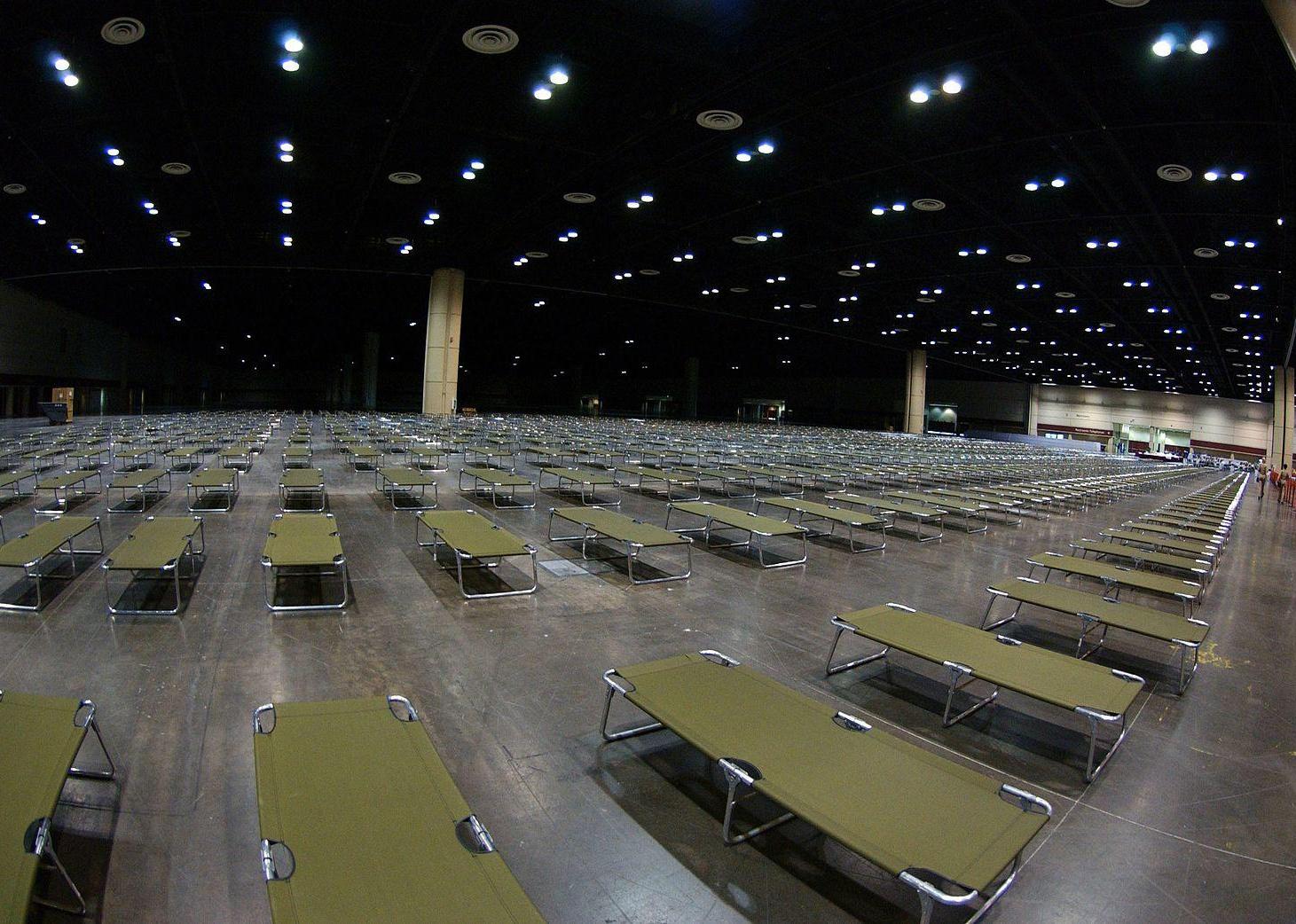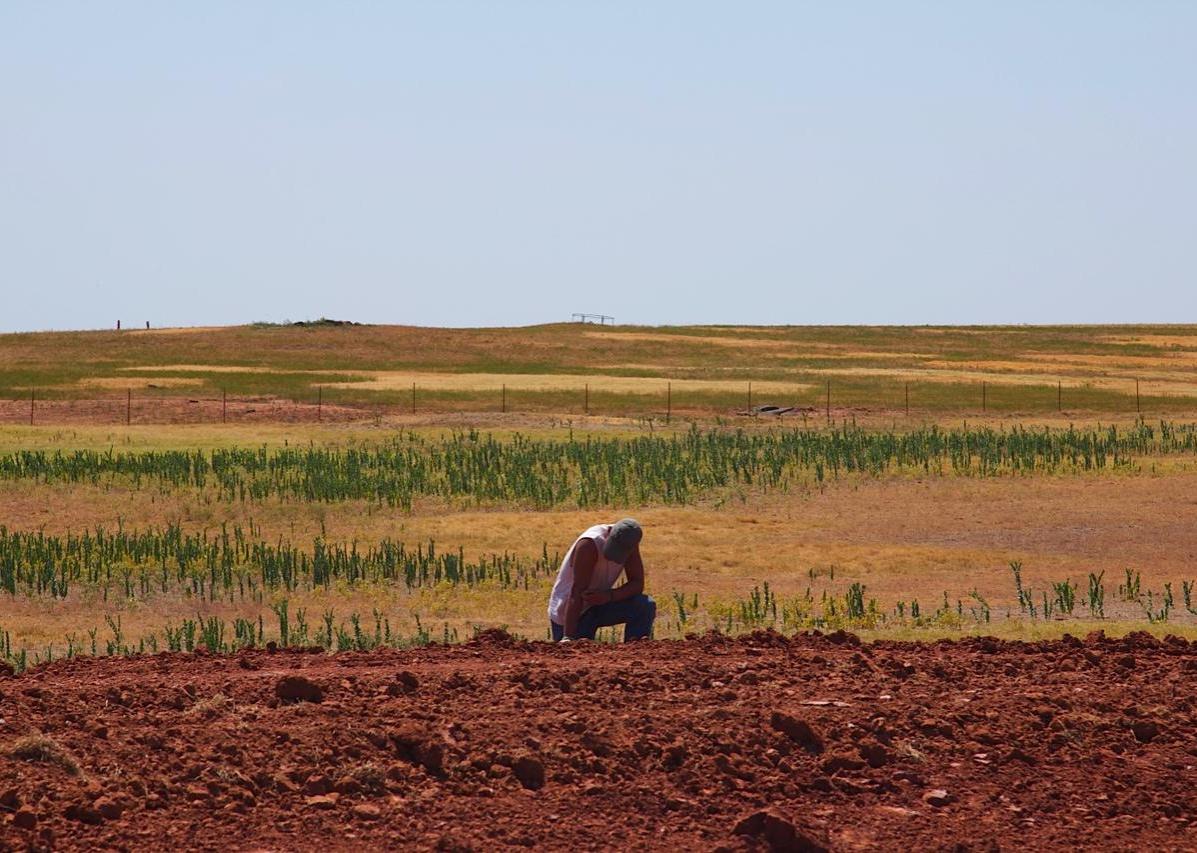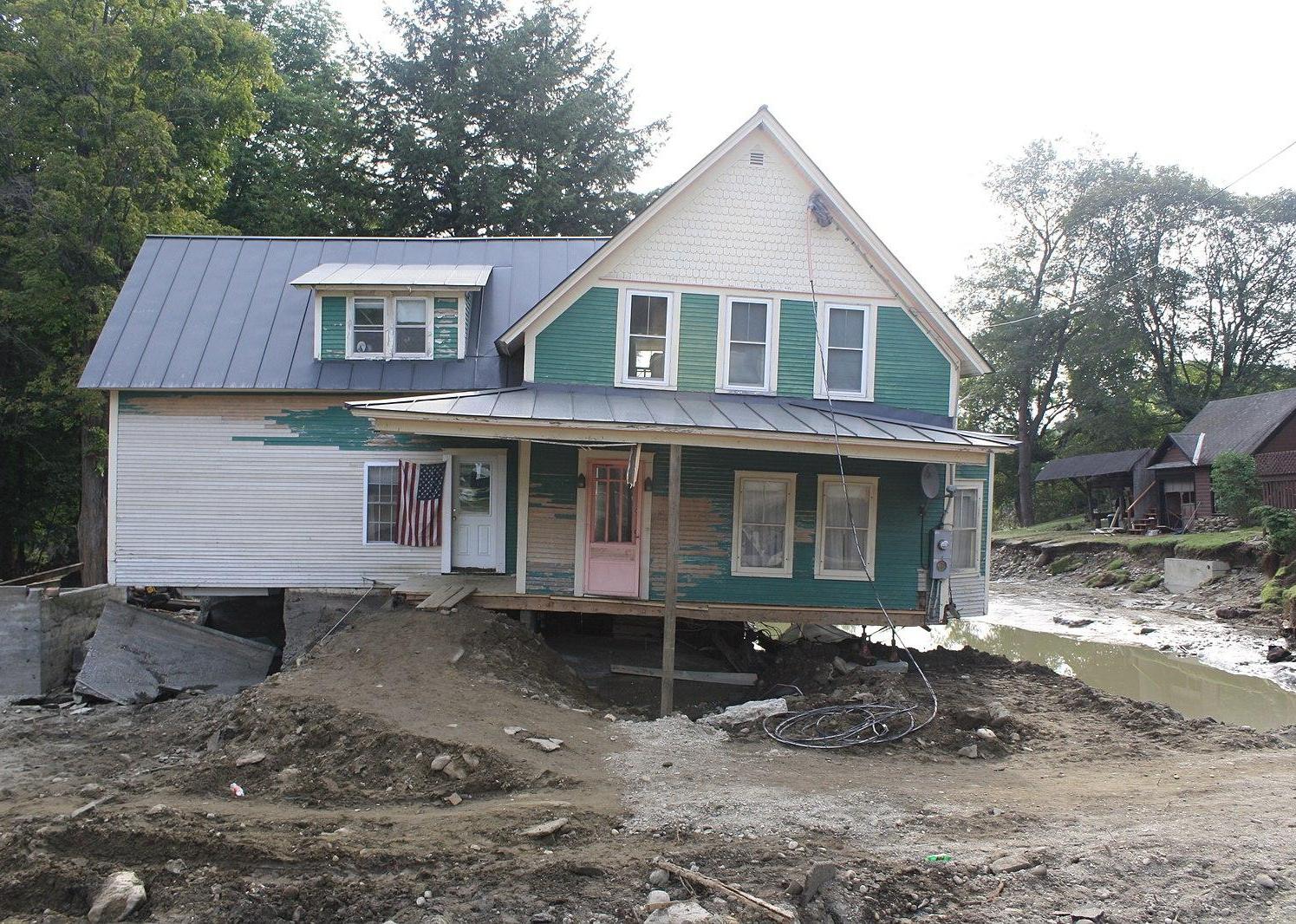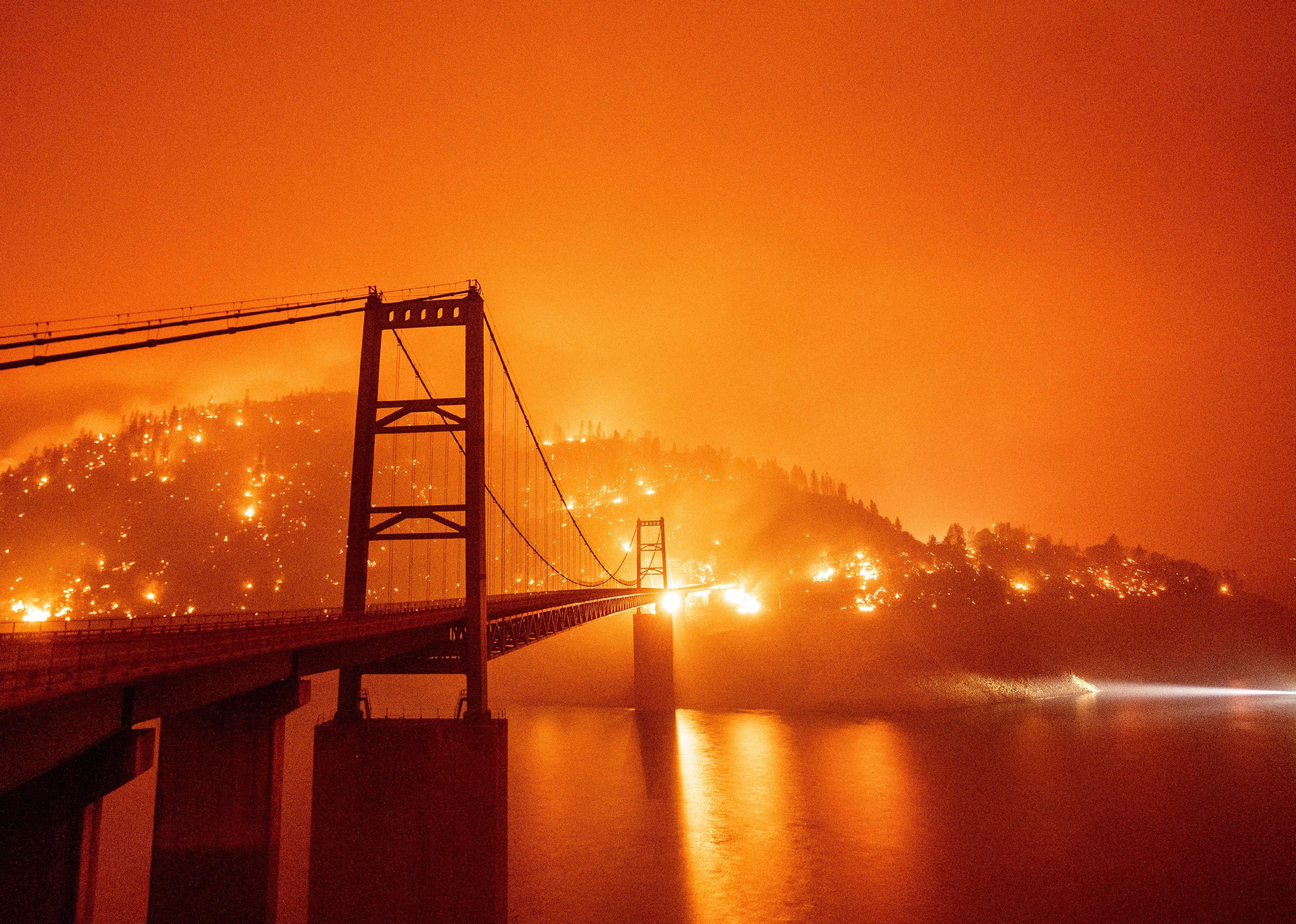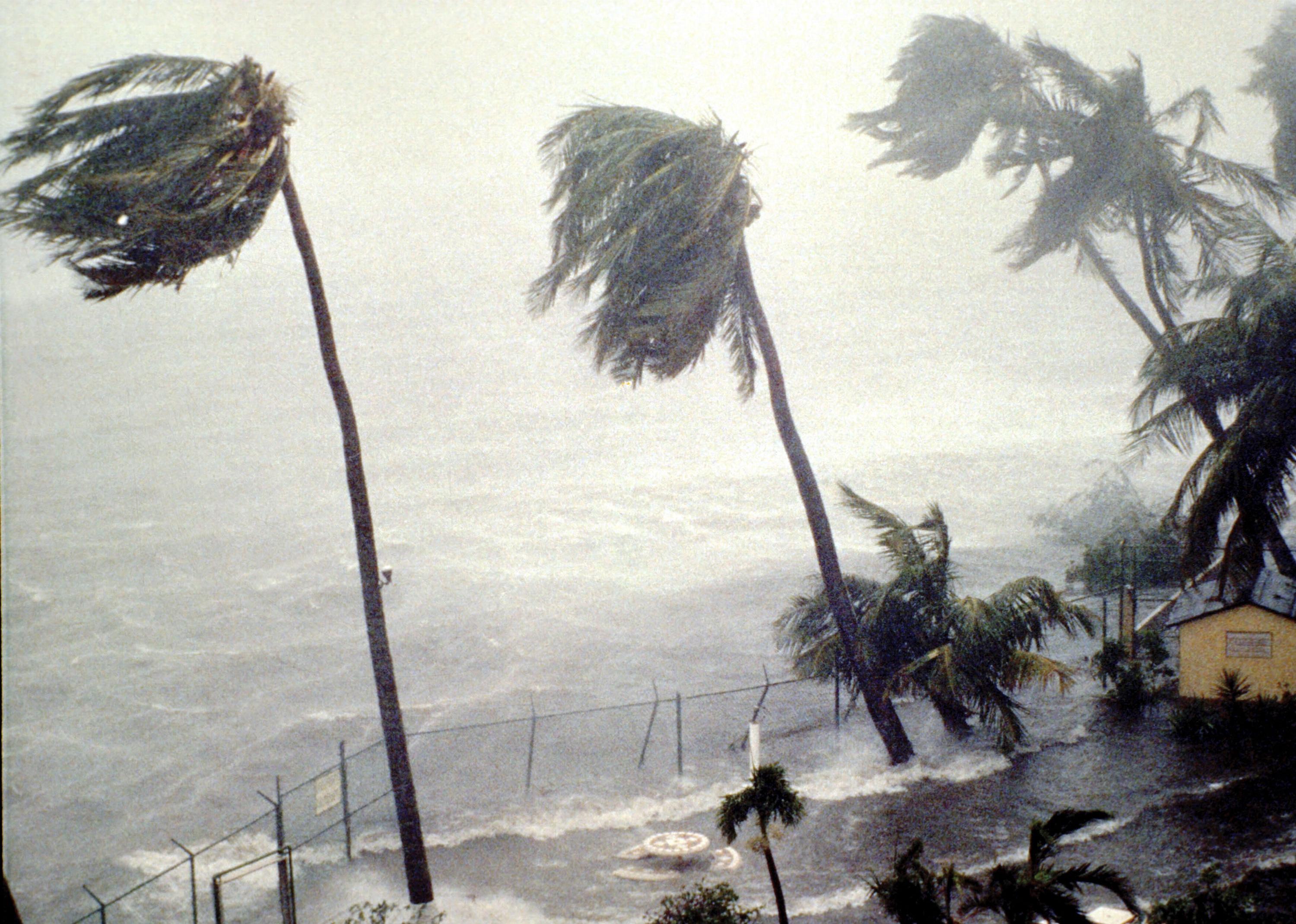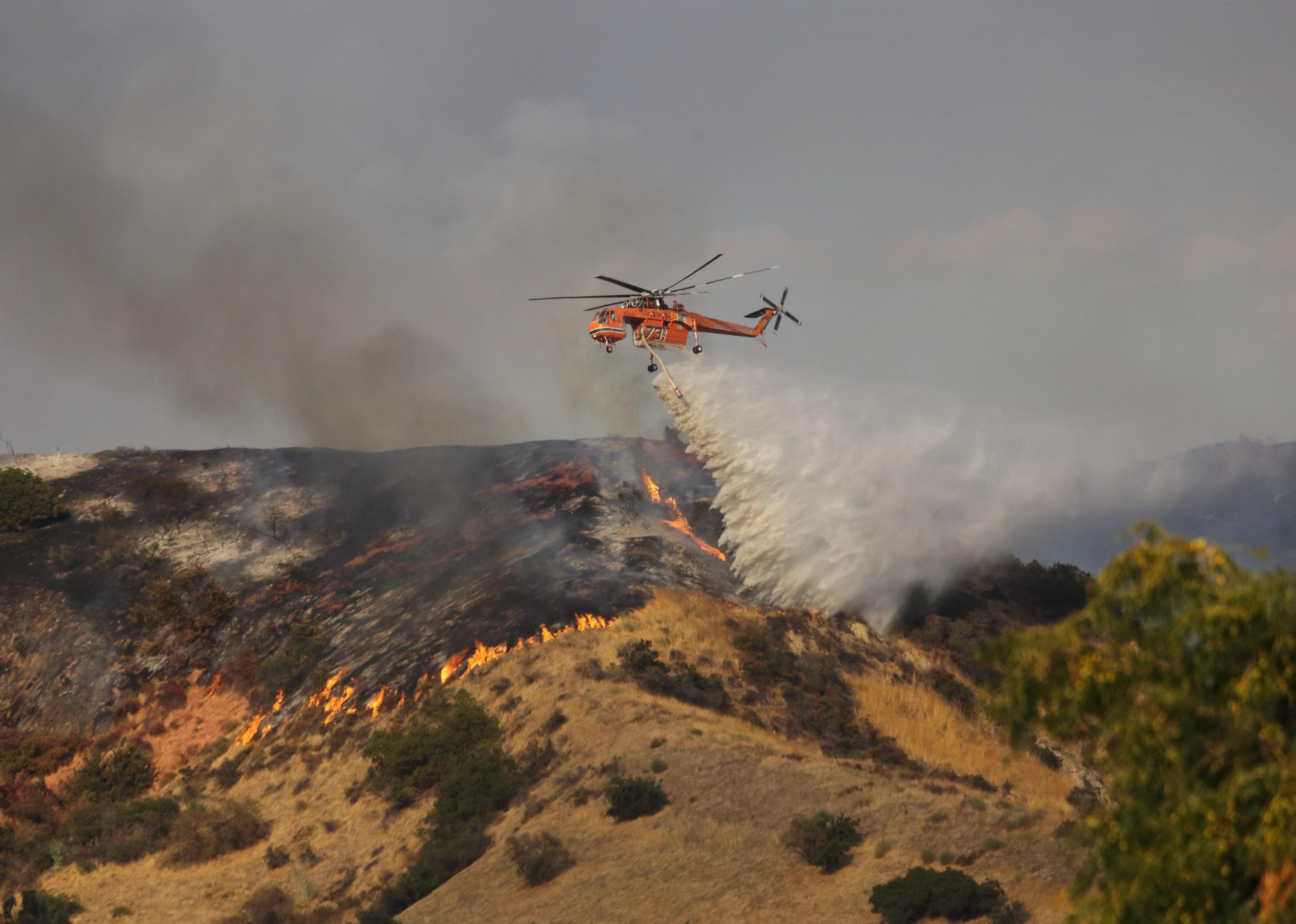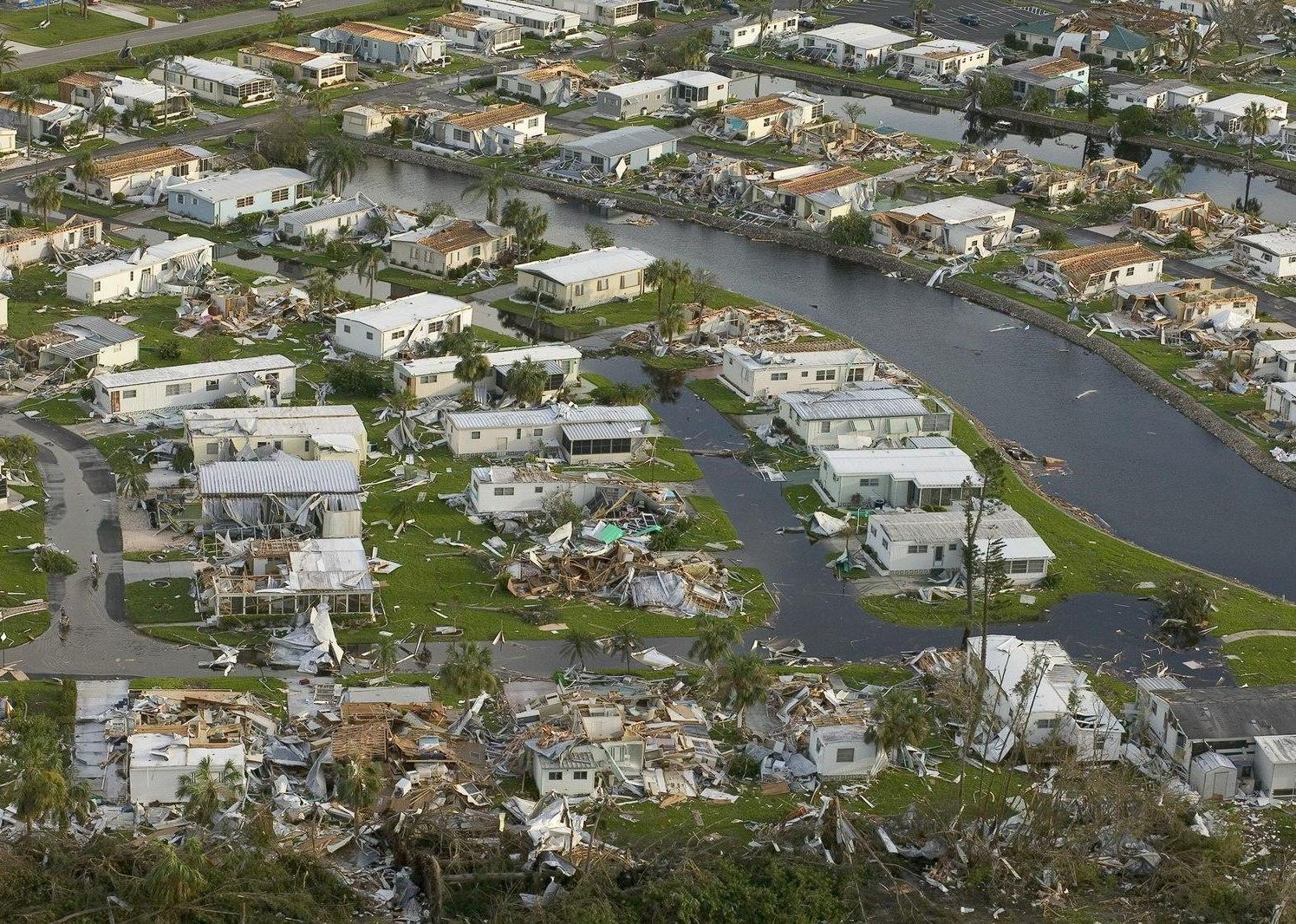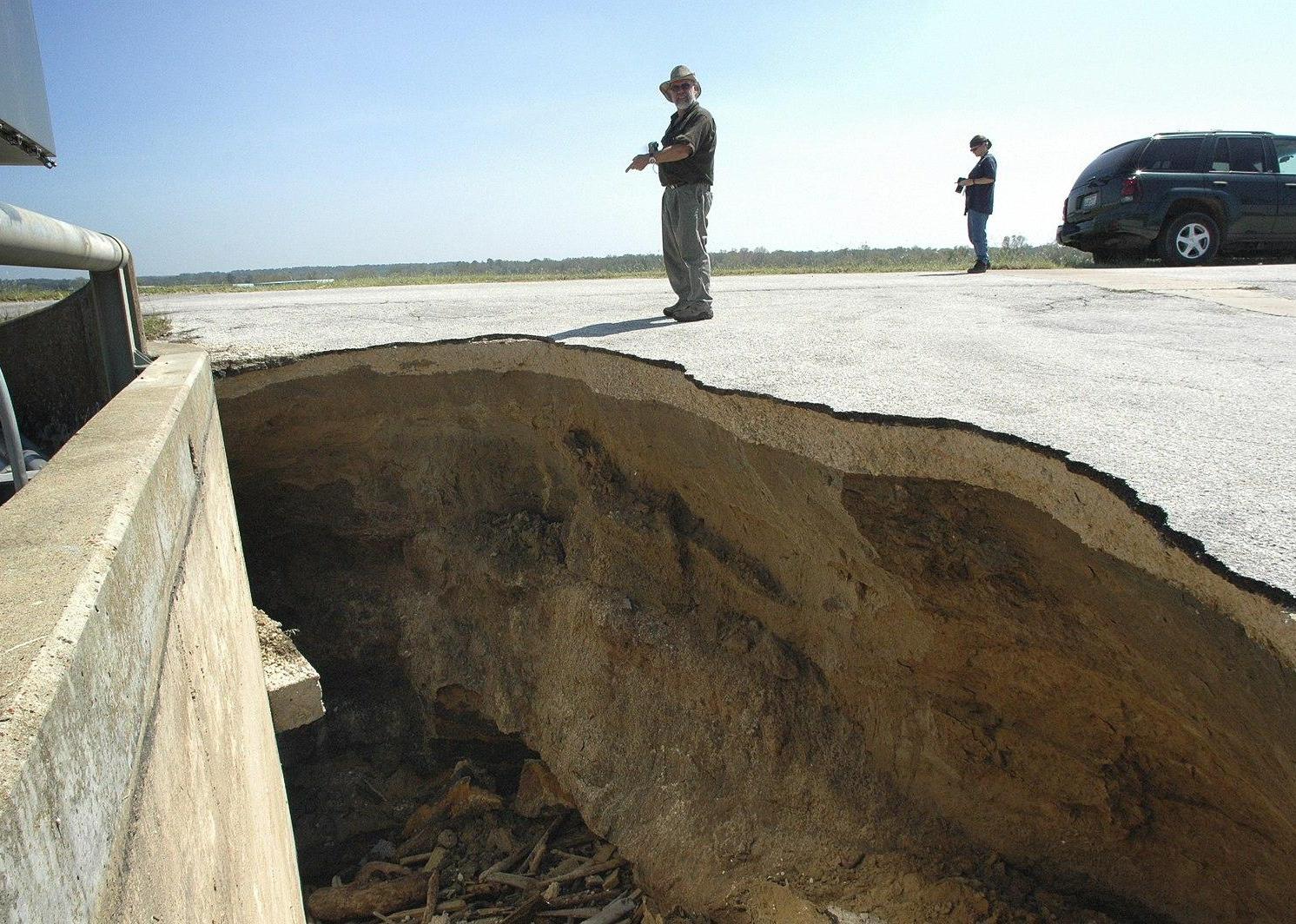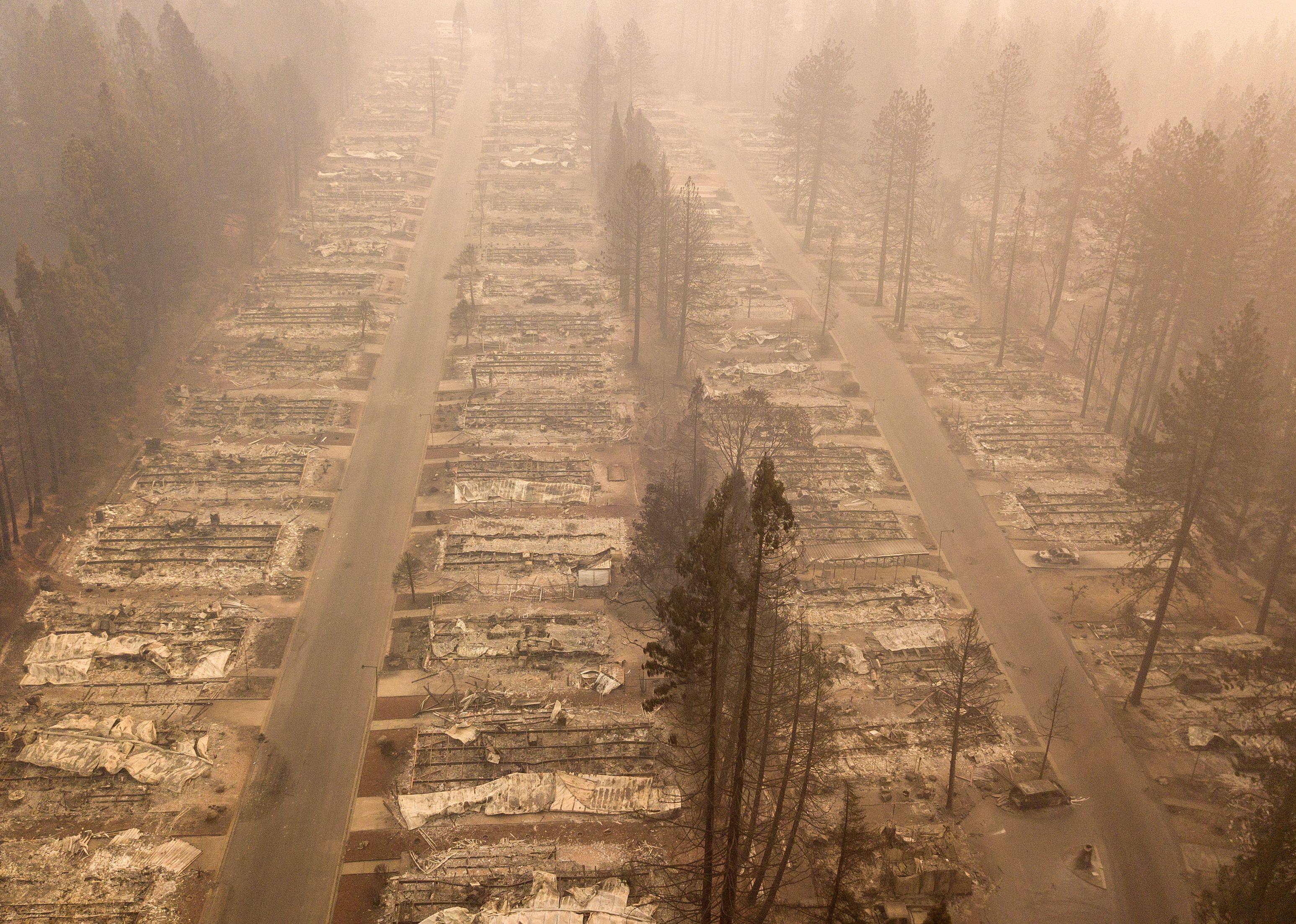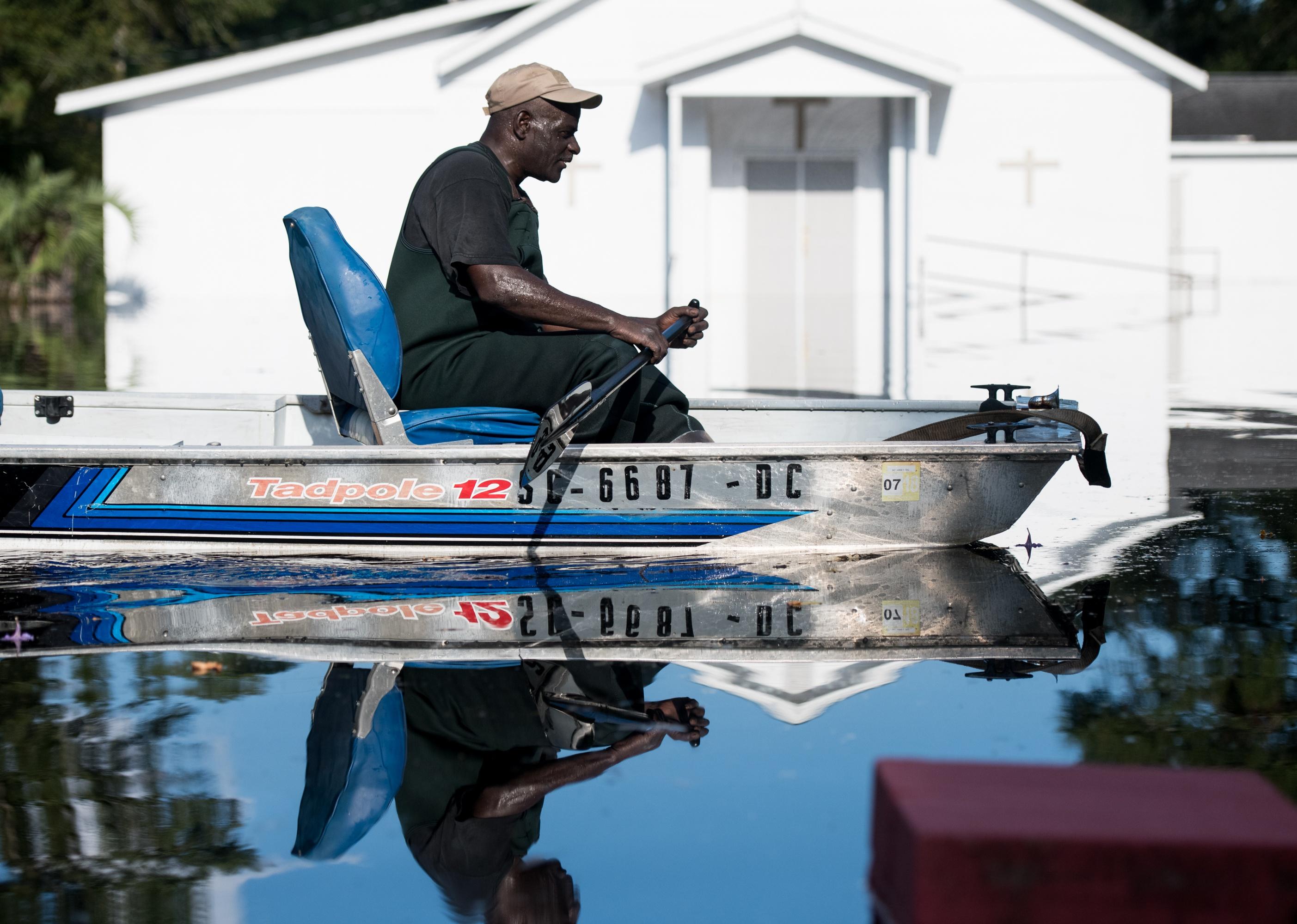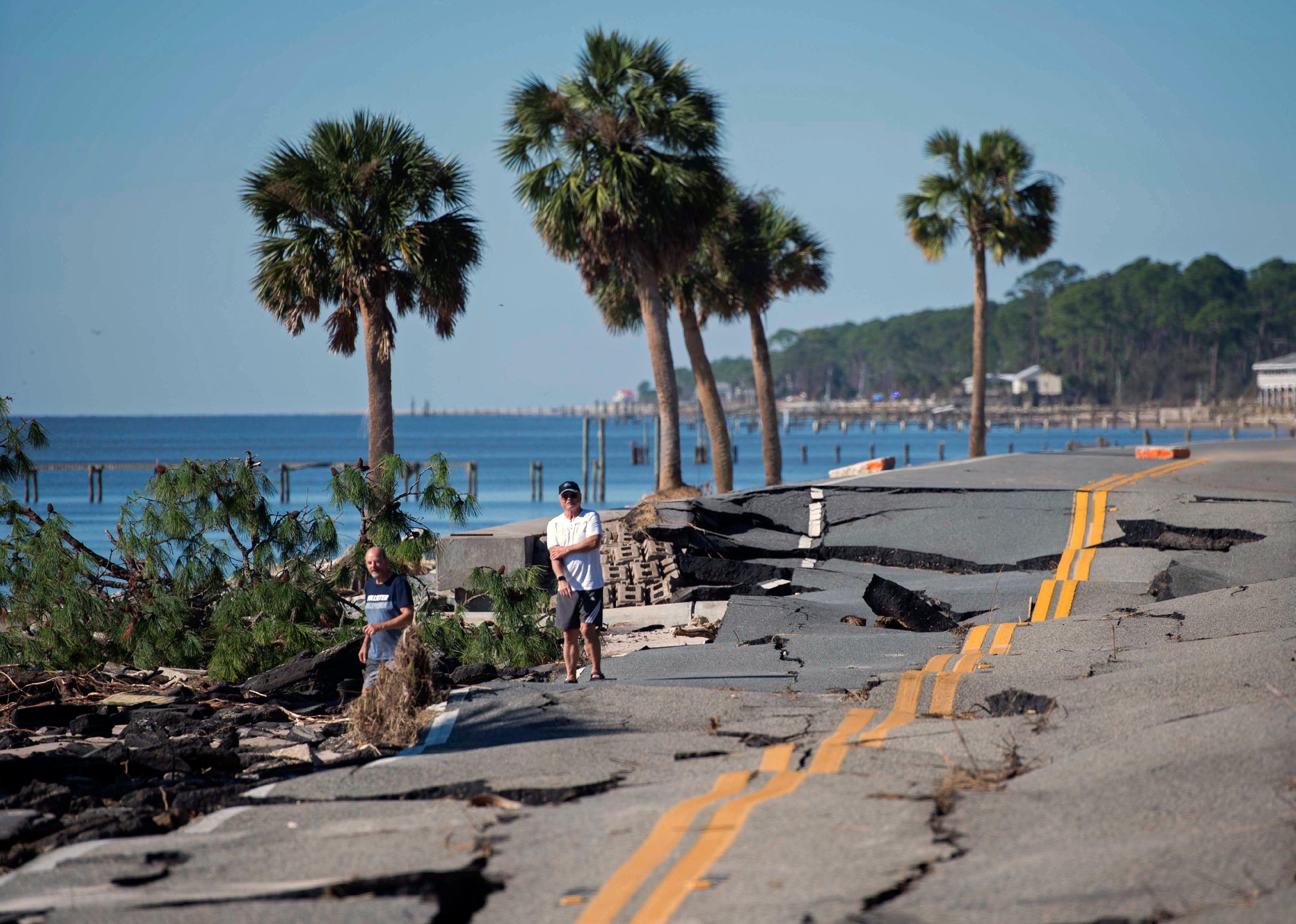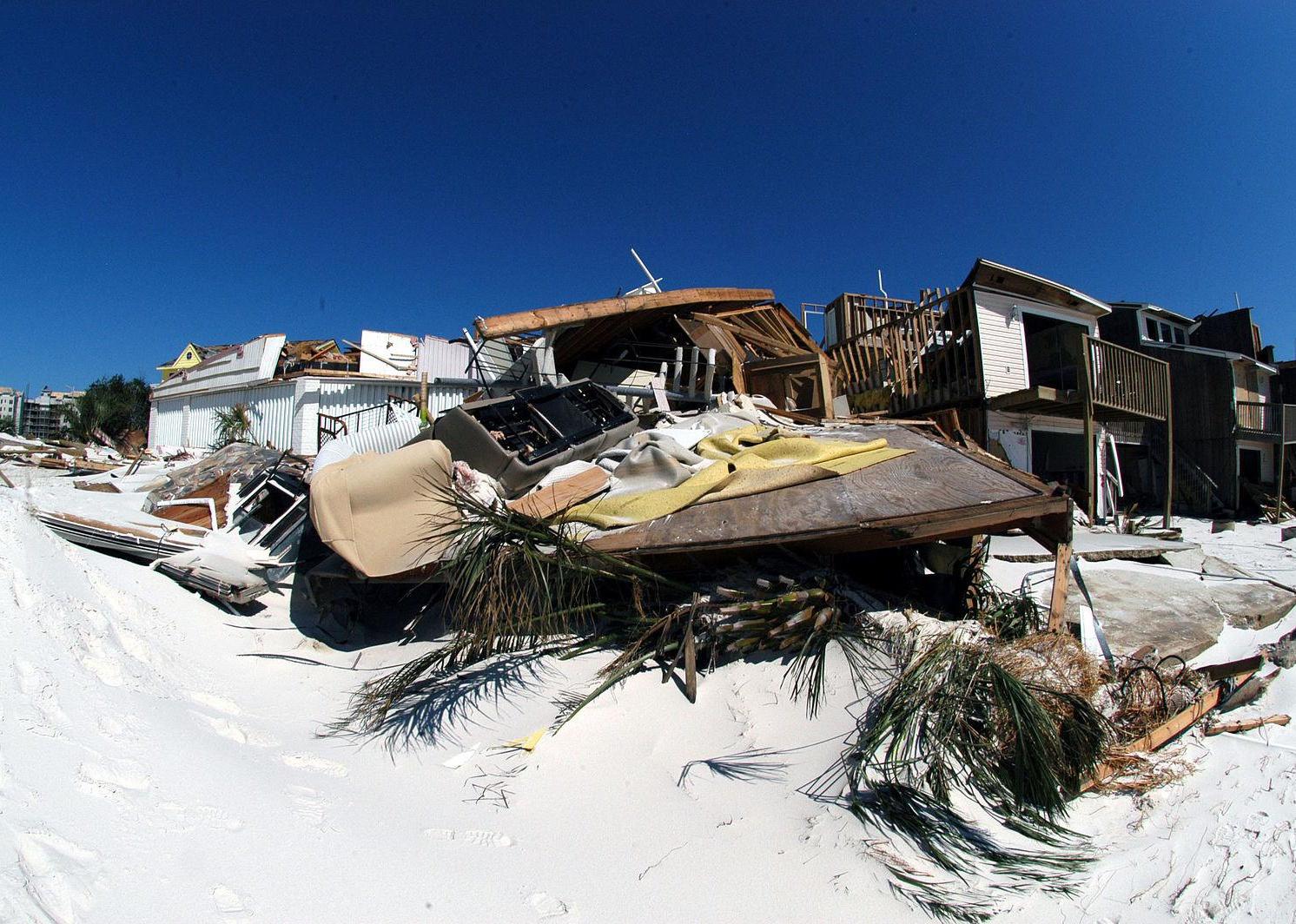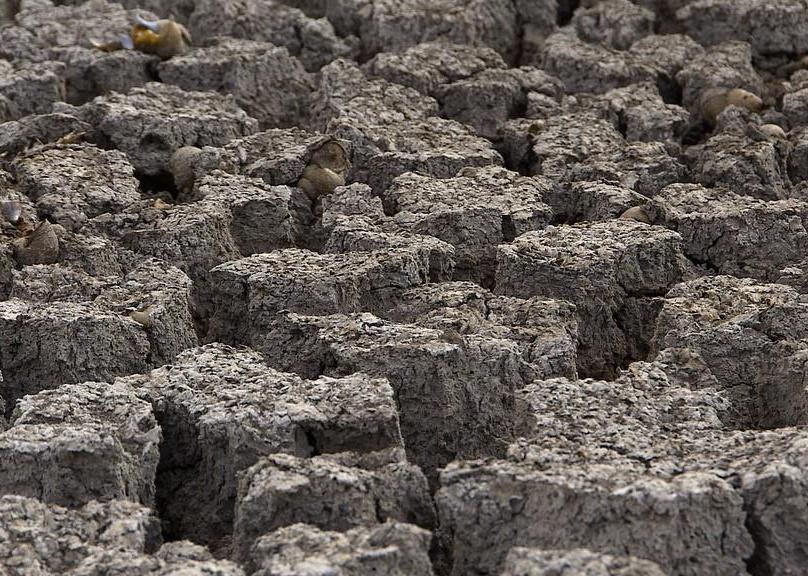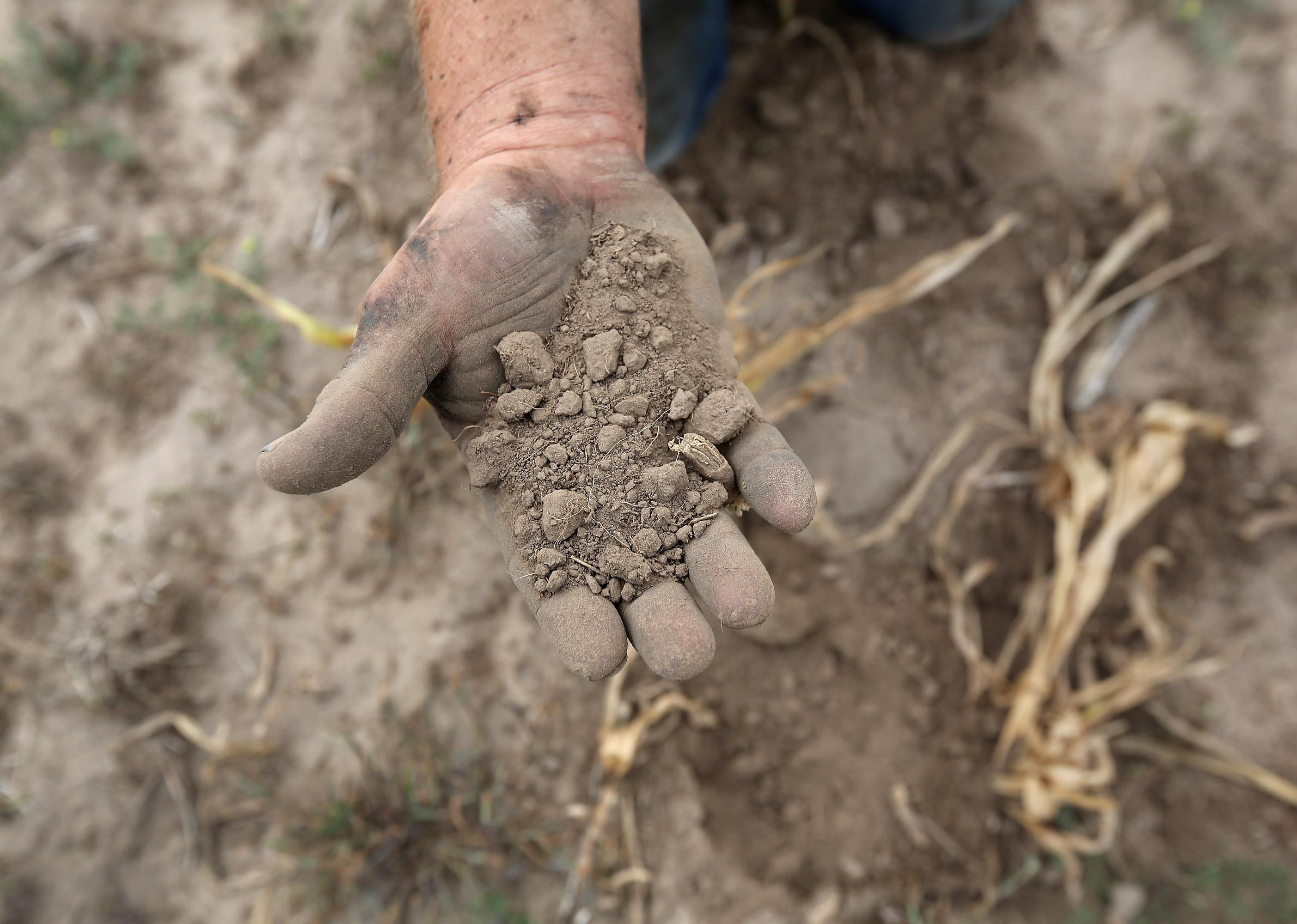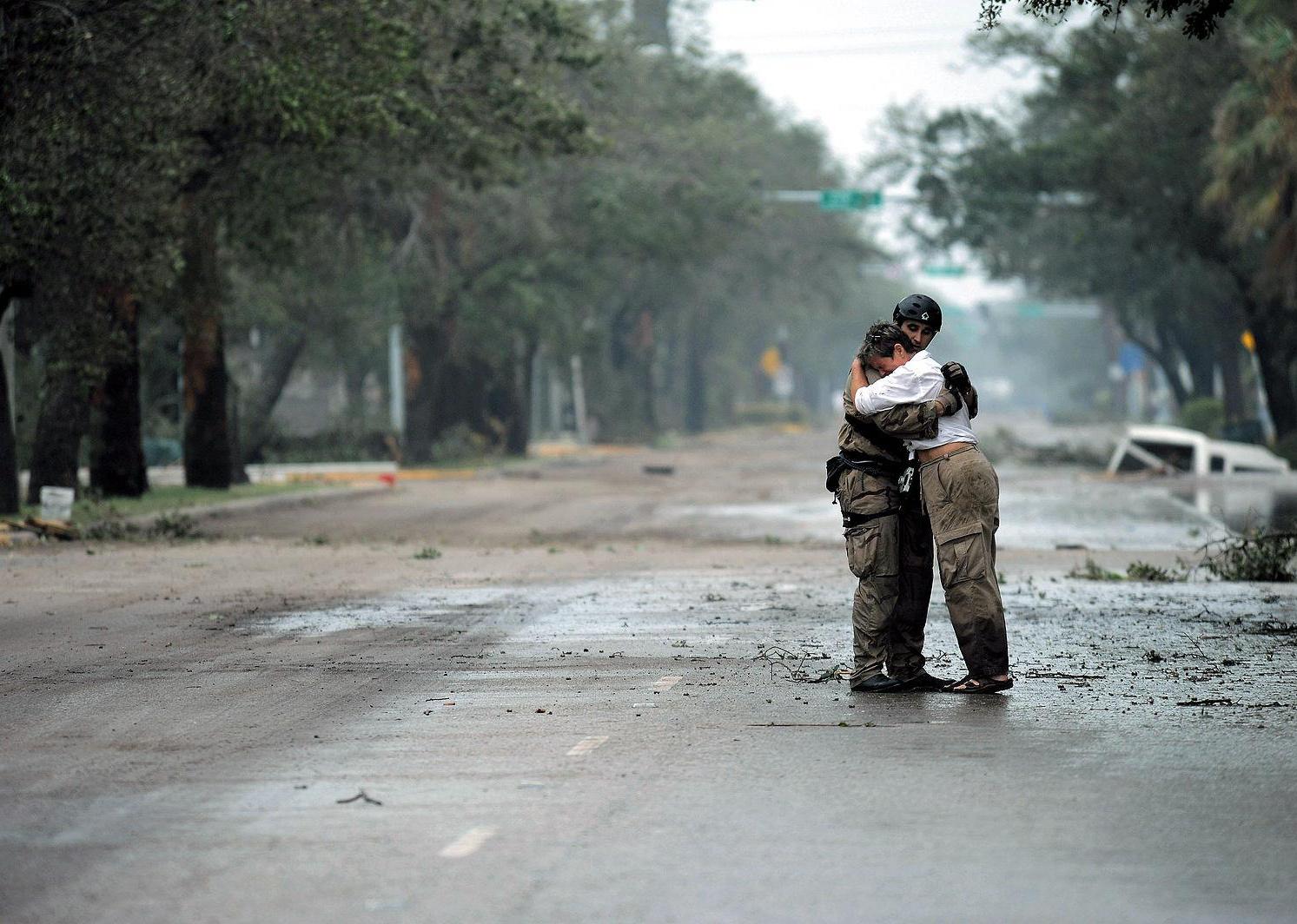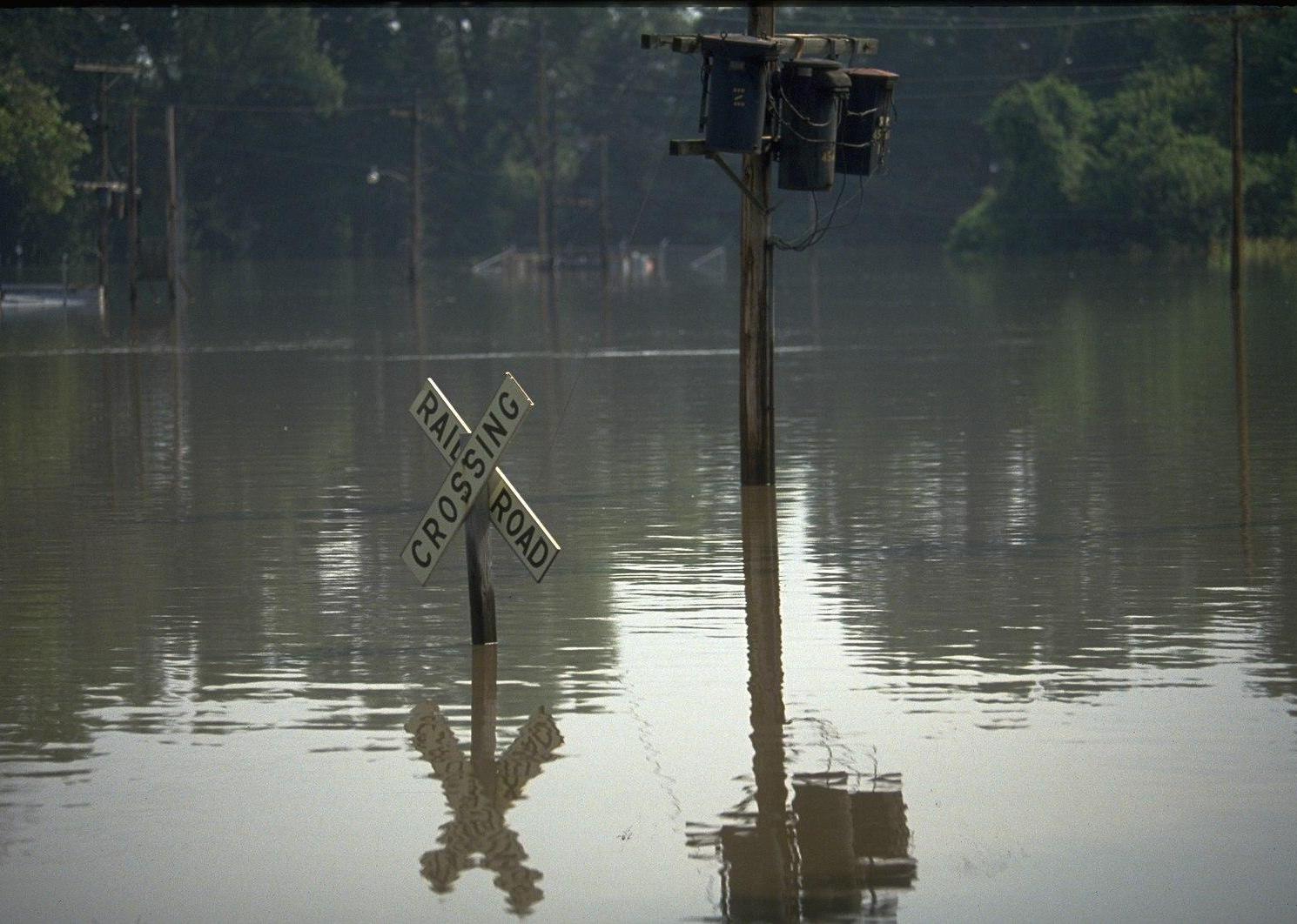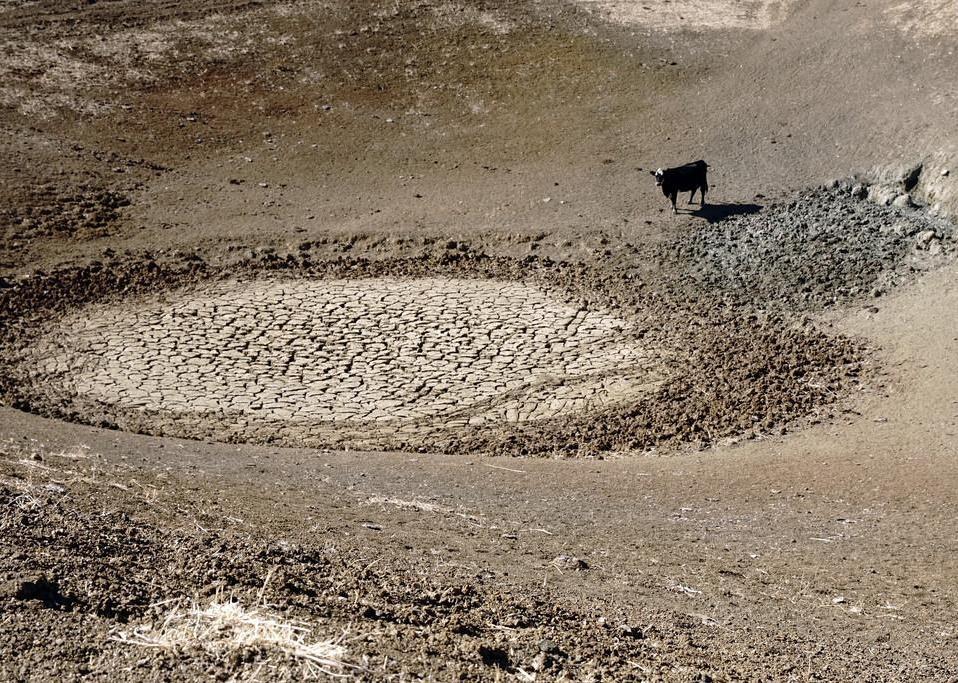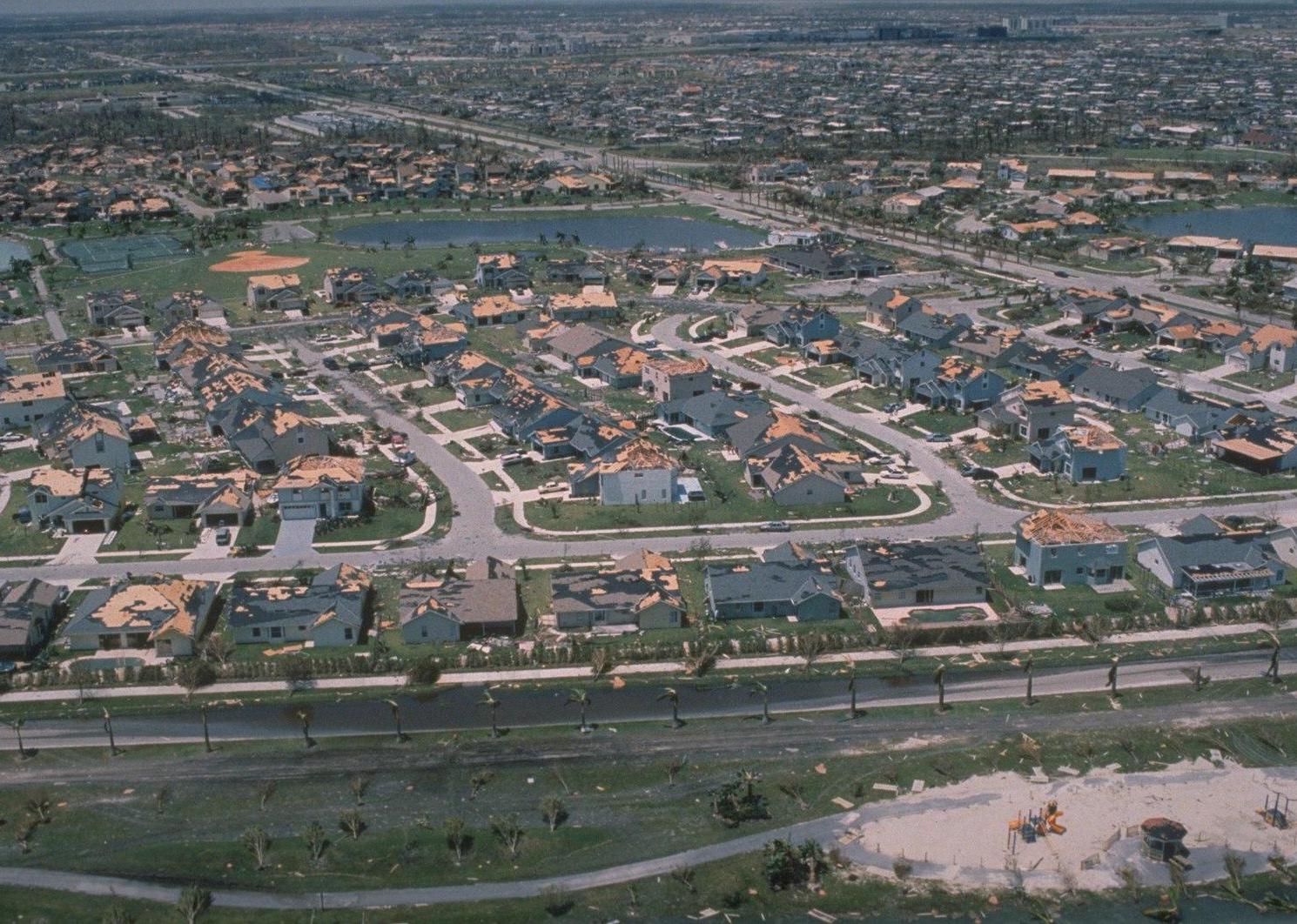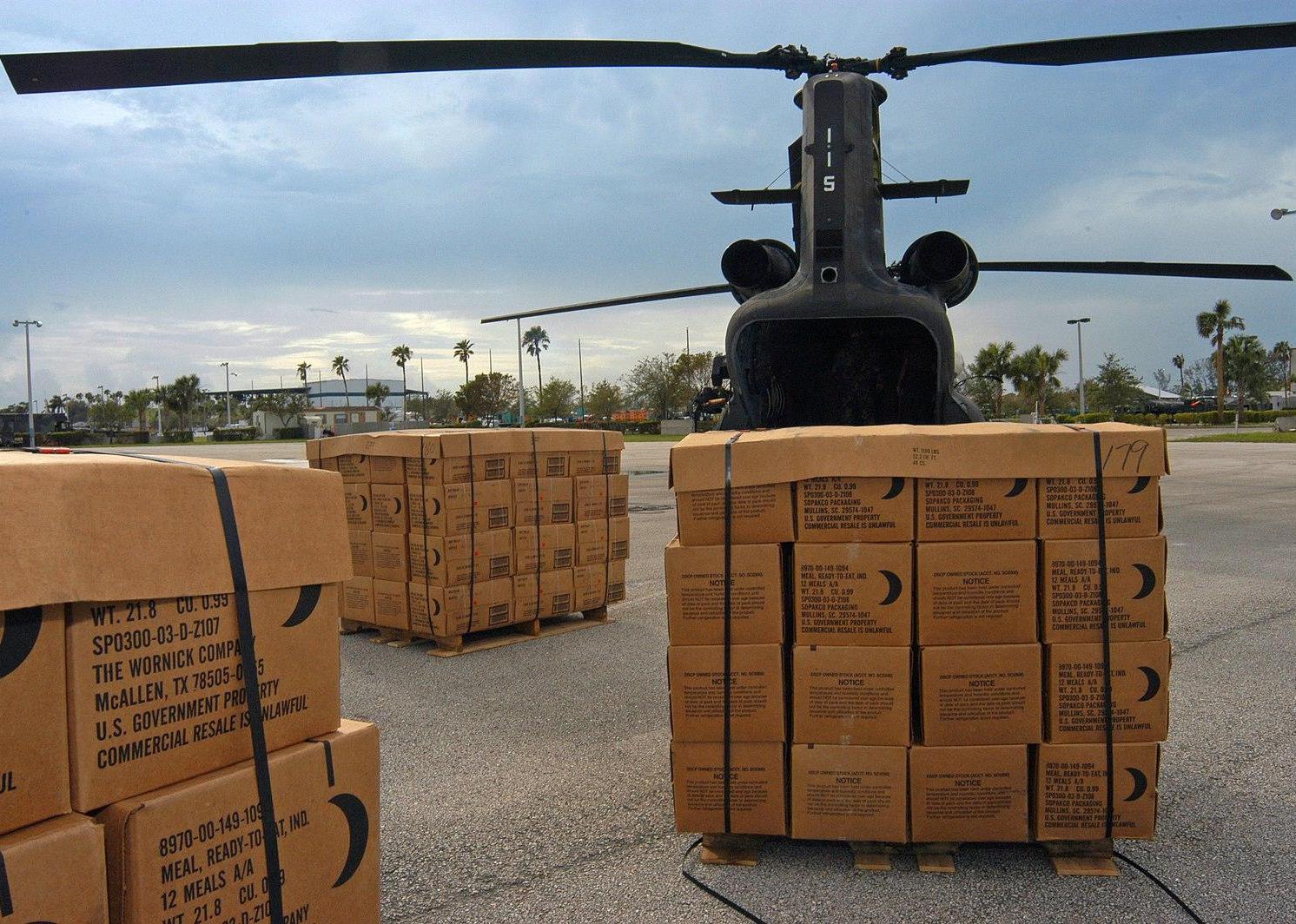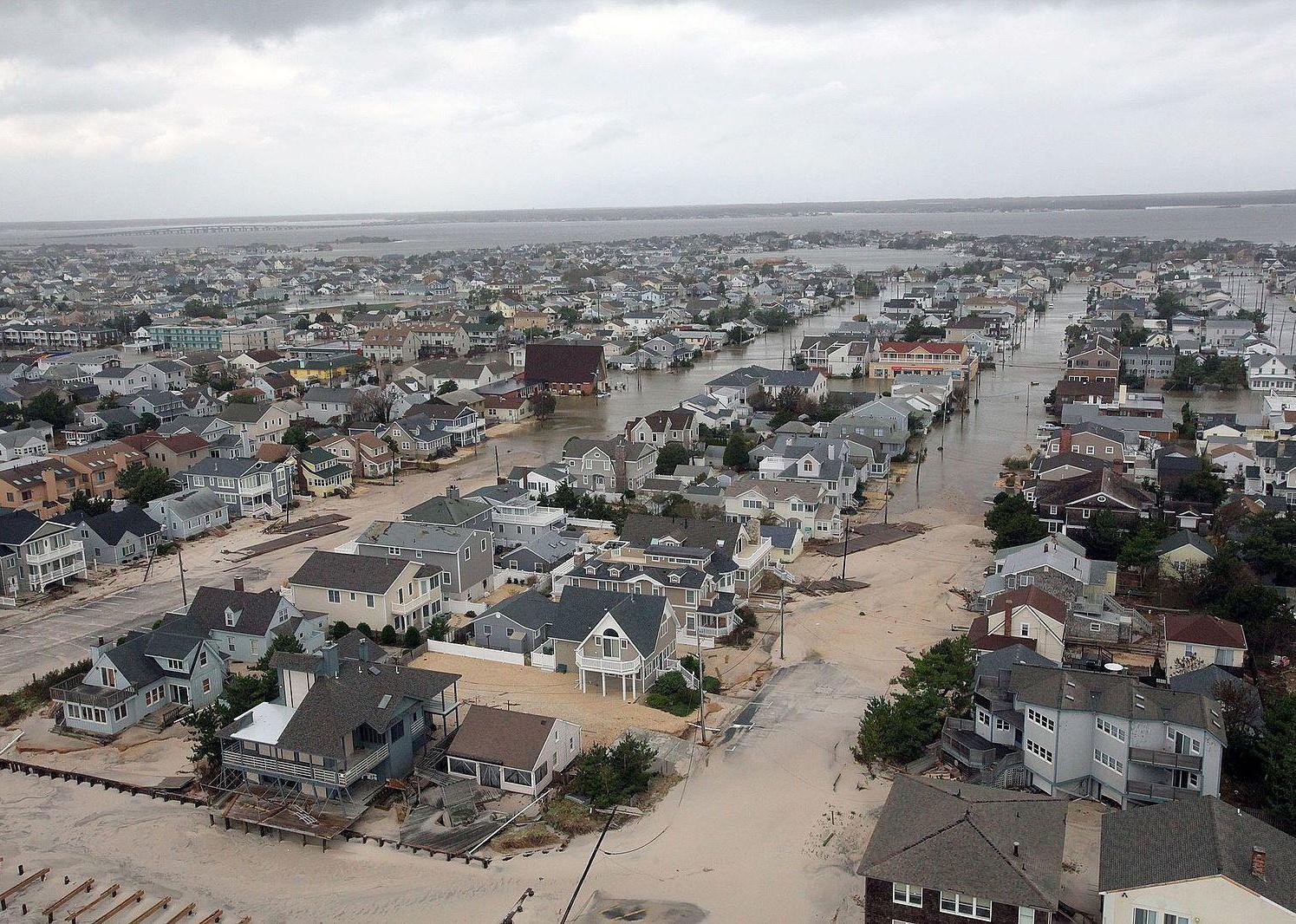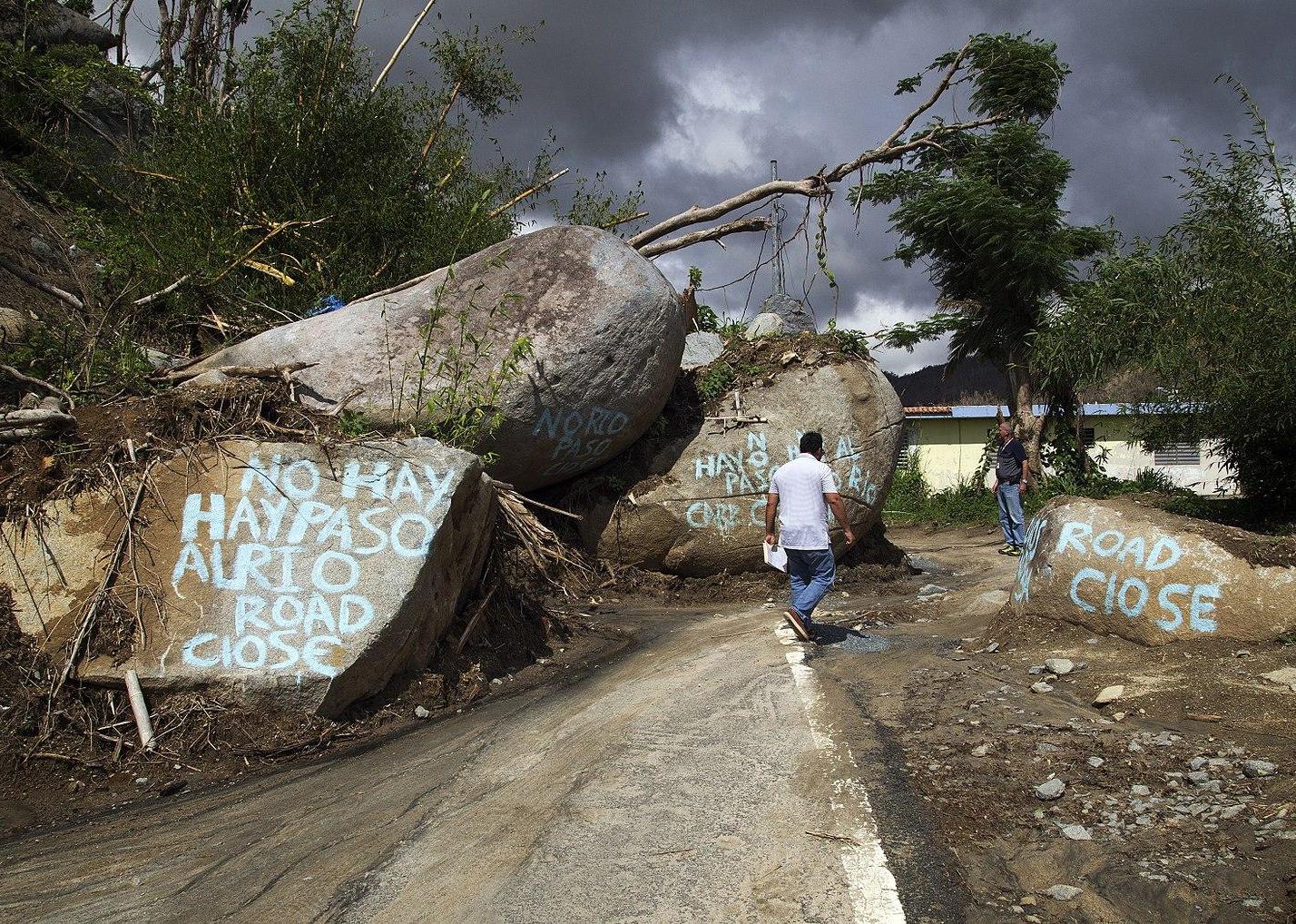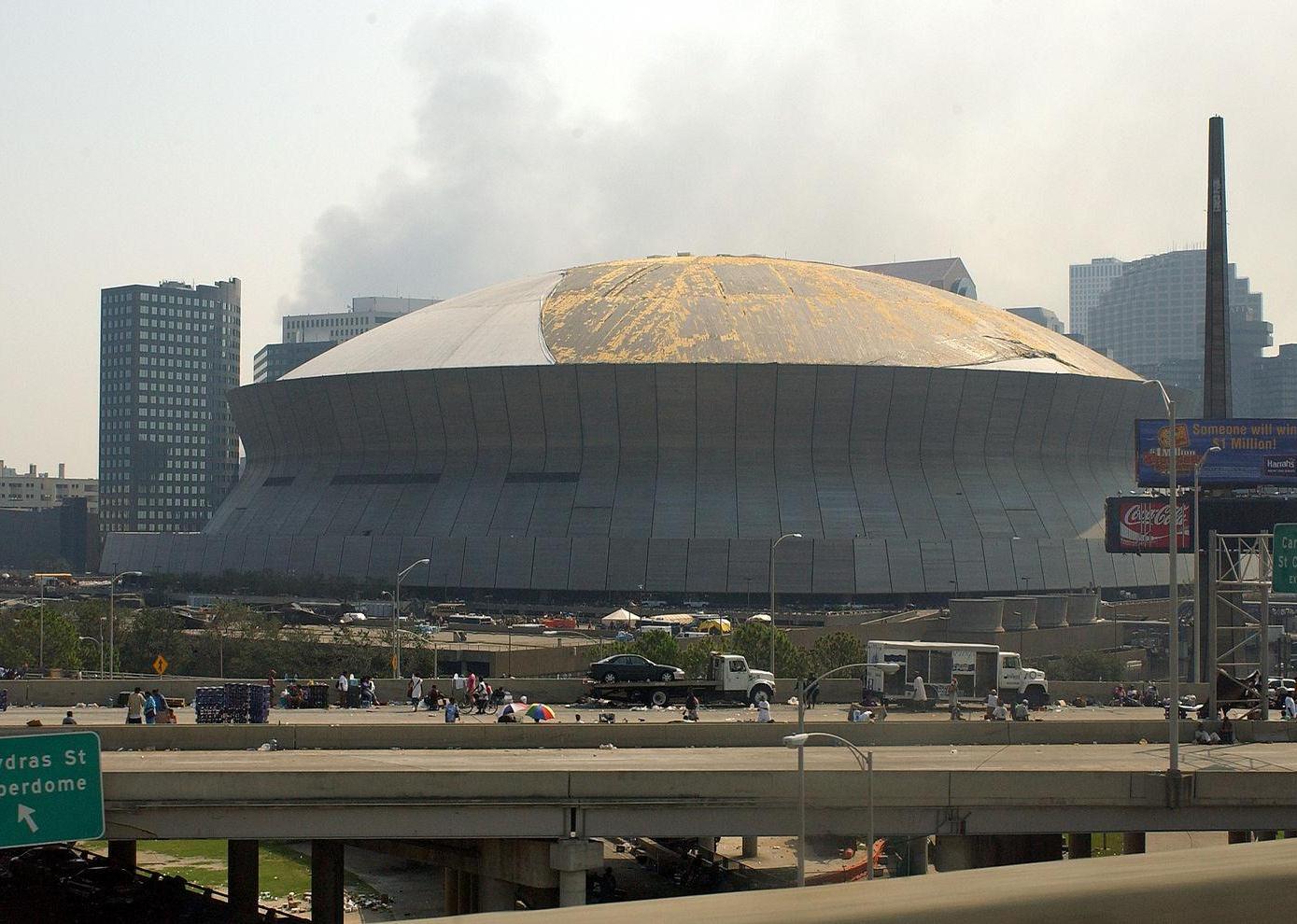In 2022 so far, the U.S. has seen a staggering .
While the total cost of these disasters has not been fully realized yet, they've already caused billions of dollars worth of damage.
Between 2021 and 2022, tropical cyclones, severe droughts and heatwaves, wildfires, and winter storms caused devastation and hundreds of deaths across the U.S. If the cost of 2021's natural disasters is any indication, 2022's total could amount to more than $100 billion in damages.
Since 1980, the U.S. alone has been hit with totalling at least $1 billion each.
ranked the most expensive climate disasters by the billions since 1980 by the total cost of all damages, adjusted for inflation to 2022 value, based on .
Estimates of the costs for Hurricane Ian, Fiona, and the 2022 Western Wildfire season are not yet available. The list starts with the Midwest, Plains, and Southeast drought, which caused $8.8 billion in damages in 2006, and ends with a devastating 2005 hurricane that caused $170 billion in damage and killed more than 1,800 people.
Keep reading to discover the 50 most expensive climate disasters in recent decades in the U.S.
USDAgov // Flickr
#50. Midwest, Plains, and Southeast drought (2006)
- Total cost (inflation-adjusted to 2022 value): $8.8 billion
- Total deaths: 0
- Begin date: March 1, 2006
- End date: Aug. 31, 2006
In the late winter and into the late summer of 2006, a drought with its eye on the Great Plains region also wreaked havoc in states across the Midwest and Southeast—by July, was suffering from moderate to extreme drought. The drought affected crops and water sources, as well as livestock, prompting the U.S. Department of Agriculture to proclaim drought disasters in many states.
USDAgov // Flickr
#49. Southeast drought (1983)
- Total cost (inflation-adjusted): $8.9 billion
- Total deaths: 0
- Begin date: June 1, 1983
- End date: Aug. 31, 1983
In the summer of 1983, many states in the Southeast experienced a rather severe flash drought., and in Kentucky,, experiencing dryness so severe that most of the state's vegetation was forced into dormancy and many towns suffered water shortages.
Dave Gatley FEMA // Wikimedia Commons
#48. Hurricane Opal
- Total cost (inflation-adjusted): $8.9 billion
- Total deaths: 27
- Begin date: Oct. 4, 1995
- End date: Oct. 6, 1995
In October 1995, the Southeast endured the wrath of.
The hurricane ravaged Florida, Alabama, western Georgia, eastern Tennessee, and the western Carolinas with its gusting winds and flooding. Most of the damage came from along the coastal areas of the Florida panhandle.
More than 1,300 homes and 1,000 boats were destroyed or extensively damaged. Left in the hurricane's wake was a massive $7.87 billion bill for such things as destroyed water and sewer systems, roadways, and phone and electric utilities.
Dave Gatley FEMA // Wikimedia Commons
#47. Hurricane Fran
- Total cost (inflation-adjusted): $9.3 billion
- Total deaths: 26
- Begin date: Sept. 5, 1996
- End date: Sept. 8, 1996
In early September 1996, Hurricane Fran hit land at the tip of Cape Fear, North Carolina, and moved into Virginia with 115 mph sustained winds.
Twenty-six people died in the Category 3 hurricane that left North Carolina with its —$8.16 billion—at the time. Some areas saw more than 10 inches of rain and 24-hour downpours, and Fran caused significant agricultural losses, as well.
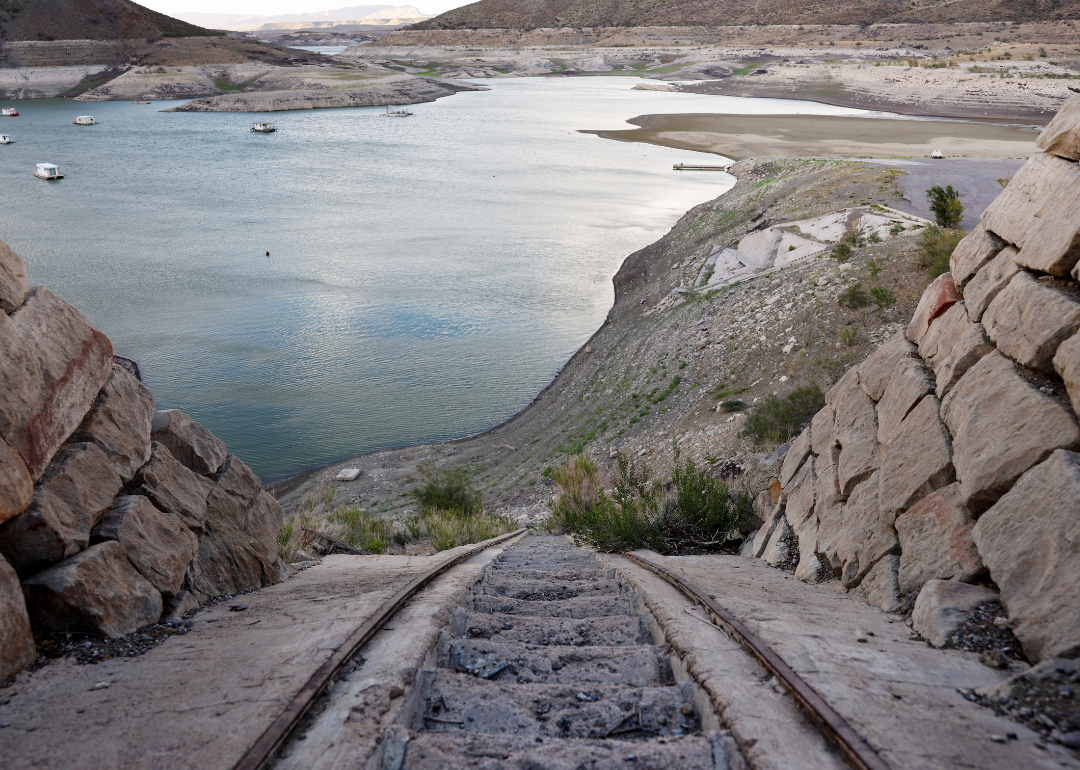
Mario Tama // Getty Images
#46. Western/Southern Plains drought and heatwave (2022)
- Total cost (inflation-adjusted): $9.3 billion
- Total deaths: 117
- Begin date: Jan. 1, 2022
- End date: Sept. 30, 2022
Scientists have linked the droughts in 2021 and 2022 back to that began in 2000 and has persisted in some way for more than two decades.
This period has been the driest since 800 A.D., and is largely caused by climate change. The summer of 2022 was also reported to be the in the U.S. States like California called on residents to conserve water use, but the duration of the drought has made many experience .
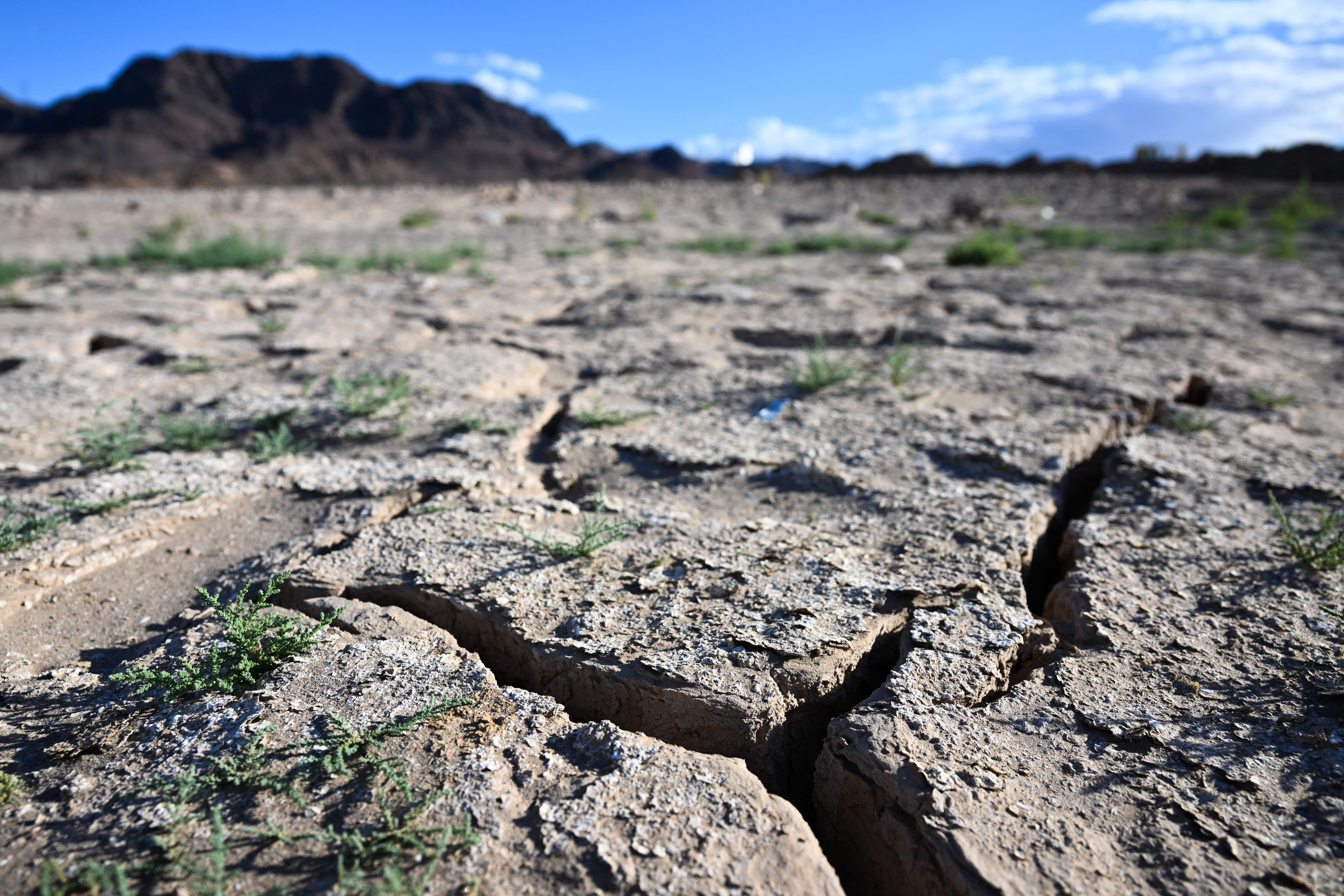
PATRICK T. FALLON/AFP via Getty Images
#45. Western drought and heatwave (2021)
- Total cost (inflation-adjusted): $9.4 billion
- Total deaths: 229
- Begin date: Jan. 1, 2021
- End date: Dec. 31, 2021
For much of 2021, the Southwest, California, and the Pacific Northwest were subject to , which wreaked havoc on agriculture, caused particularly bad wildfires, and created a shortage of water supplies.
Despite the Western U.S. being accustomed to moderate drought conditions, the was worse than usual, causing some regions to go months without any rain. Roughly 229 deaths were reported.
USDA // Wikimedia Commons
#44. US drought (2008)
- Total cost (inflation-adjusted): $9.7 billion
- Total deaths: 0
- Begin date: Jan. 1, 2008
- End date: Dec. 31, 2008
More than that included large parts of the Southeast, West, the Great Plains, northwestern Great Lakes, and south-central Texas.
The drought contributed to agricultural and livestock losses and many communities adopted water and burning restrictions. In Tennessee, the governor declared an agricultural disaster in 39 counties. North Dakota saw its driest winter in 114 years, and Minnesota saw its second driest.
NRCS Montana // Flickr
#43. South Plains severe weather
- Total cost (inflation-adjusted): $10.5 billion
- Total deaths: 32
- Begin date: May 5, 1995
- End date: May 7, 1995
In early May 1995, the South Plains region, including Texas, Oklahoma, southeast Louisiana, and Mississippi, saw that included heavy rains, hail, and tornadoes. New Orleans was the hardest hit, experiencing 10 to 25 inches of rain over five days. All told, 32 people died and the severe weather caused billions in damage.
Dave Gatley FEMA // Wikimedia Commons
#42. Hurricane Georges
- Total cost (inflation-adjusted): $10.7 billion
- Total deaths: 604
- Begin date: Sept. 20, 1998
- End date: Sept. 29, 1998
The second-most catastrophic hurricane in the Atlantic basin for 1998 was Category 2 Hurricane Georges, which struck Sept. 20. Georges Puerto Rico, the Virgin Islands, the Florida Keys, and the coasts of Louisiana, Mississippi, Alabama, and Florida.
Some areas had totals of up to 2 feet of rain over several days. In the end, 604 people died, mostly in the Dominican Republic and Haiti, and the hurricane caused more than $9 billion in damage.
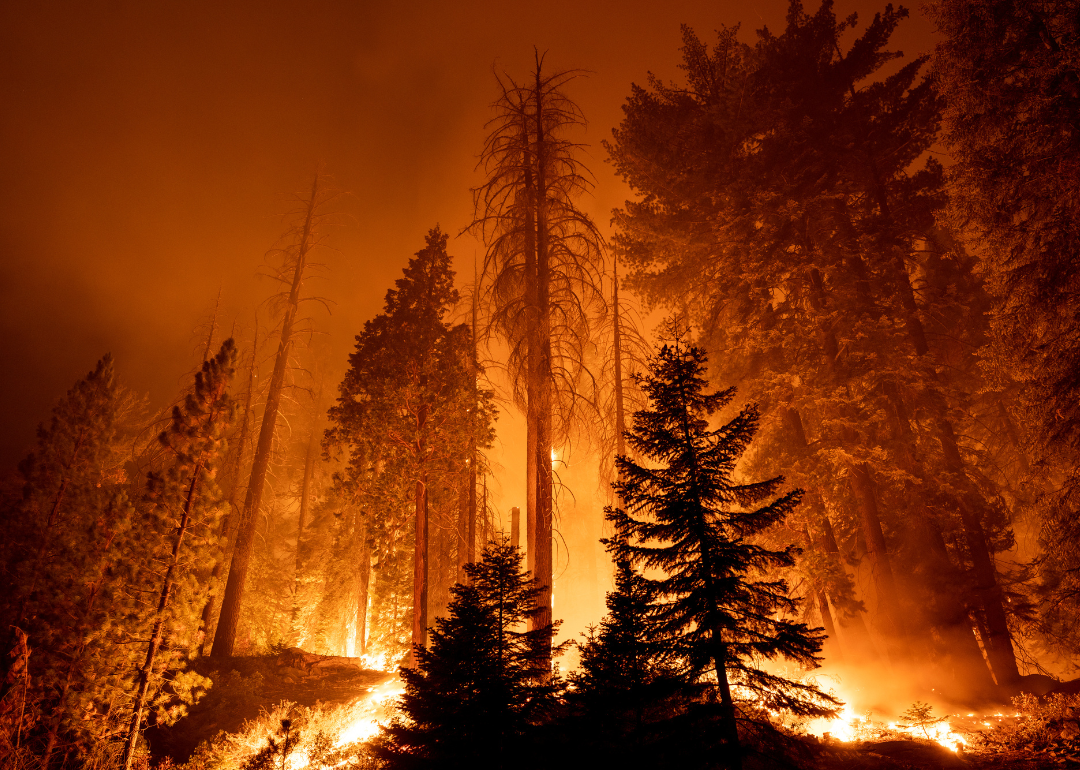
David McNew // Getty Images
#41. Western wildfires
- Total cost (inflation-adjusted): $11.2 billion
- Total deaths: 8
- Begin date: June 1, 2021
- End date: Dec. 31, 2021
Severe drought and heat conditions in the Western U.S. led to devastating wildfires in the region in 2021.
Roughly 7.7 million acres were burned, and the particularly dry conditions made the fires extraordinarily difficult to put out. Between the destruction of property and funds needed to battle the megablazes, the 2021 wildfires were some of the costliest in U.S. history.
In addition to the ecological and economic damages, smoke from the fires is thought to have mingled with the debilitating respiratory effects of COVID-19 to by the thousands.
Liz Roll FEMA // Wikimedia Commons
#40. East Coast blizzard and severe weather
- Total cost (inflation-adjusted): $11.3 billion
- Total deaths: 270
- Begin date: March 11, 1993
- End date: March 14, 1993
On March 11, 1993, "The Storm of the Century"—the most catastrophic and —hit the entire East Coast with blizzards and severe weather that left many Eastern and Northeastern states under 2 to 4 feet of snow, and enduring hurricane-like winds, flooding, or tornadoes.
Power was out to more than 10 million homes as the storm covered more than 550,000 square miles and affected almost 120 million people. All told, 270 people died in 13 states and 48 people were reported missing at sea.
Dave Saville FEMA // Wikimedia Commons
#39. Hurricane Floyd
- Total cost (inflation-adjusted): $11.3 billion
- Total deaths: 77
- Begin date: Sept. 14, 1999
- End date: Sept. 16, 1999
On Sept. 14, 1999, Category 2 Hurricane Floyd struck the East Coast, hitting . Twelve other states were affected and 10 were declared major disaster areas.
The large size and range of Floyd resulted in heavier and longer-lasting rains—10 to 20 inches over two days in some areas. The largest peacetime evacuation in the United States occurred as more than 2.6 million fled their homes.
The total death count was 77, with 51 in North Carolina alone. More than 80,000 homes were destroyed or damaged and 500,000 households were without electricity.
Mark Wolfe FEMA // Wikimedia Commons
#38. Hurricane Jeanne
- Total cost (inflation-adjusted): $11.5 billion
- Total deaths: 28
- Begin date: Sept. 15, 2004
- End date: Sept. 29, 2004
Florida was hit by its fourth and final hurricane for a record-breaking year on Sept. 26, 2004, when Hurricane Jeanne made landfall on Hutchinson Island.
The Category 3 hurricane was the. After rampaging through Florida with 115 mph winds and heavy rain, Jeanne continued up the coast, hitting nine more states. It was the and the 15th-most expensive in U.S. history at that time.
Greg Dumas NOAA // Wikimedia Commons
#37. Midwest/Southeast tornadoes
- Total cost (inflation-adjusted): $11.7 billion
- Total deaths: 177
- Begin date: May 22, 2011
- End date: May 27, 2011
In May 2011, a flurry of tornadoes——broke out all over the central and southern United States, resulting in 177 deaths and making that year the seventh-deadliest for tornado fatalities.
Jonathan Shaw US National Guard // Wikimedia Commons
#36. Hurricane Matthew
- Total cost (inflation-adjusted): $12.1 billion
- Total deaths: 49
- Begin date: Oct. 8, 2016
- End date: Oct. 12, 2016
After skirting along Florida's coastline, , just south of Myrtle Beach, South Carolina. Flooding significantly affected coastal Georgia, the eastern Carolinas, and southeast Virginia.
North Carolina experienced historic levels of river flooding. More than 100,000 homes and businesses were damaged. The flooding also wreaked havoc on agriculture, leading to huge losses in poultry, orchards, vegetables, and other crops. Hurricane Matthew was recorded as reaching Category 5 intensity at the .
Paul Meeker US National Guard // Wikimedia Commons
#35. Louisiana flooding
- Total cost (inflation-adjusted): $12.3 billion
- Total deaths: 13
- Begin date: Aug. 12, 2016
- End date: Aug. 15, 2016
For three days in August 2016, Louisiana was in as many as 30 inches of heavy rain, causing historic flooding in a majority of its southern region. At least 20 parishes were declared disaster areas.
More than 70,000 homes and businesses were destroyed or damaged, 30,000 people had to be rescued, and at least 13 died as a result of what was then the most destructive flooding since Hurricane Sandy in 2012.
Jamie Squire // Getty Images
#34. Missouri River and North Central flooding
- Total cost (inflation-adjusted): $12.4 billion
- Total deaths: 3
- Begin date: March 14, 2019
- End date: March 31, 2019
Rising rivers throughout the northern and central Plains in March 2019 flooded farms, towns, and cities. The flooding was caused by an aggressive storm system throughout the central U.S. that brought heavy winds, whiteout snow conditions, and downpours all the way from Colorado to North Dakota.
Daniel Acker // Getty Images
#33. Central severe weather - Derecho
- Total cost (inflation-adjusted): $12.5 billion
- Total deaths: 4
- Begin date: Aug. 10, 2020
- End date: Aug. 10, 2020
A derecho—a line of powerful, quick windstorms sometimes joined by thunderstorms traversing a large expanse of land—pushed its way over the Midwest in the summer of 2020, causing damage in Illinois, Indiana, Nebraska, and Wisconsin.
The winds were powerful enough to create tornadoes. Power outages and property damage affected millions of people.
Al Jazeera English // Wikimedia Commons
#32. Western/Plains drought and heat wave (2013)
- Total cost (inflation-adjusted): $13.2 billion
- Total deaths: 53
- Begin date: March 1, 2013
- End date: Nov. 30, 2013
2013 was a dry year for every state west of the Mississippi River as each experienced some level of drought and heat wave conditions. The drought began in the Midwest and Plains states and spread to Western states in March.
By September, was in a state of drought. California experienced its driest year on record as 97% of the state suffered from drought.
Thilo Parg // Wikimedia Commons
#31. Southeast/Ohio Valley/Midwest tornadoes
- Total cost (inflation-adjusted): $13.3 billion
- Total deaths: 321
- Begin date: April 25, 2011
- End date: April 28, 2011
Over the course of three days, —with a particular proclivity for metropolitan areas—in the Central and Southern United States in what was one of the deadliest, most destructive outbreaks in history.
Alabama was hit the hardest as an EF-5 tornado struck in the northern region, affecting Tuscaloosa and Birmingham and killing at least 78 people and injuring thousands more. In the wake of hundreds of other tornadoes and three EF-5 level strikes, thousands of homes and businesses were destroyed or significantly damaged.
Andrea Booher FEMA // Wikimedia Commons
#30. Midwest flooding (2008)
- Total cost (inflation-adjusted): $13.7 billion
- Total deaths: 24
- Begin date: April 1, 2008
- End date: June 30, 2008
The Midwest was subjected to continued heavy rain as storm system after storm system rolled through in 2008.
Billions of dollars in agricultural loss and property damage were the result of mass flooding in Iowa, Illinois, Indiana, Montana, Minnesota, Nebraska, and Wisconsin. Historic water levels were reported all over the Midwest with .
Andrea Booher FEMA // Wikimedia Commons
#29. Tropical Storm Allison
- Total cost (inflation-adjusted): $14.0 billion
- Total deaths: 43
- Begin date: June 5, 2001
- End date: June 17, 2001
On June 5, 2001, the at that time struck, bringing heavy rains to Texas and Louisiana, which each saw rainfall between 30 and 40 inches. Severe flooding followed, and Allison headed northeast to Mississippi, Florida, Virginia, and Pennsylvania.
Each state suffered loss of life and property; in all, at least 45,000 homes were damaged or destroyed, thousands of public facilities and businesses were damaged, and 43 people were killed.

Canva
#28. US drought (2002)
- Total cost (inflation-adjusted): $14.9 billion
- Total deaths: 0
- Begin date: March 1, 2002
- End date: Nov. 30, 2002
2002 was another dry year with experiencing severe to extreme drought in July.
The longstanding drought decreased to 22% of the contiguous United States by the end of December because storms brought heavy rains. The affected regions had some of the lowest precipitation levels in history, affecting water sources, and destroying crops and pastureland. Colorado, Arizona, and Oregon endured large wildfires that year, as well.
Jocelyn Augustino FEMA // Wikimedia Commons
#27. Hurricane Frances
- Total cost (inflation-adjusted): $15.1 billion
- Total deaths: 48
- Begin date: Sept. 3, 2004
- End date: Sept. 9, 2004
Making landfall on Sept. 5 on the Florida peninsula near Sewall's Point, started its course of destruction along the Southeast with its 105 mph winds and heavy rains that caused mass flooding and spawned more than 117 tornadoes.
Florida's citrus crop was devastated, and more than 1.8 million residents lost electricity. Georgia, the Carolinas, and New York also sustained significant damage from flooding caused by 6 to 20 inches of rain.
Al Jazeera English // Wikimedia Commons
#26. Southern Plains/Southwest drought and heat wave
- Total cost (inflation-adjusted): $15.9 billion
- Total deaths: 95
- Begin date: March 1, 2011
- End date: Aug. 31, 2011
From March to the end of August 2011, impacted much of the Southern Plains and Southwest United States. Range and pasture lands were in poor condition for much of the 2011 growing season and the drought took its toll on Texas, Oklahoma, New Mexico, Arizona, Kansas, and Louisiana. At least 95 people died.
Ann Froschauer USFWS // Wikimedia Commons
#25. Hurricane Irene
- Total cost (inflation-adjusted): $17.4 billion
- Total deaths: 45
- Begin date: Aug. 26, 2011
- End date: Aug. 28, 2011
Hurricane Irene hit land in North Carolina before moving up the East Coast, affecting eight other states, perhaps none more so than Vermont. The true beast of the Category 1 hurricane was its , which caused mass flooding. Vermont saw more than 11 inches of rain and more than $733 million in damage.
More than 7 million people lost power and 45 were killed, and Irene also spawned numerous tornadoes. In New York, which also sustained massive rains, thousands of flights were cancelled and major transportation services were shut down.
JOSH EDELSON/AFP // Getty Images
#24. Western wildfires - California, Oregon, Washington firestorms (2020)
- Total cost (inflation-adjusted): $18.4 billion
- Total deaths: 46
- Begin date: Aug. 1, 2020
- End date: Dec. 30, 2020
2020's western U.S. wildfire season was one for the history books that capped off an already turbulent year for people all over the world. The blazes were touched off by a series of August thunderstorms in California, Oregon, and Washington and expanded by powerful winds across dry landscapes and forests.
Gary Williams // Getty Images
#23. Hurricane Hugo
- Total cost (inflation-adjusted): $21.1 billion
- Total deaths: 86
- Begin date: Sept. 21, 1989
- End date: Sept. 22, 1989
In September 1989, Category 4 Hurricane Hugo left the Carolinas with astronomical damage caused by its 140 mph winds and storm surges. The event also as the drama of Hugo—the most destructive hurricane at that time—unfolded.
In Bull's Bay just north of Charleston, South Carolina, a nearly 20-foot storm surge devoured the town. In the Carolinas alone, Hugo more than 100,000 homes and killed at least 19 people.
Kilmer Media // Shutterstock
#22. Western wildfires, California firestorm (2017)
- Total cost (inflation-adjusted): $21.4 billion
- Total deaths: 54
- Begin date: June 1, 2017
- End date: Dec. 31, 2017
Over the summer of 2017, many parts of the western United States and California experienced historic firestorms causing more than $18 billion in damage—the costliest wildfire series in history. ripped through Northern California in October, burning over 1.2 million acres, destroying more than 15,000 homes and businesses, and killing 44.
More wildfires broke out across other western states, roasting 9.8 million acres in their paths. The resulting smoke was so extreme over Labor Day weekend that its
Andrea Booher FEMA // Wikimedia Commons
#21. Hurricane Charley
- Total cost (inflation-adjusted): $24.6 billion
- Total deaths: 35
- Begin date: Aug. 13, 2004
- End date: Aug. 14, 2004
In the middle of August 2004, near the Punta Gorda area in southwest Florida. The 145 mph winds and storm surges resulted in major damage to coastal areas—thousands of homes and businesses were destroyed, 2 million were left without electricity, and 25 of Florida's 67 counties were declared as federal disaster areas. Charley continued northeast up the coast, devastating Florida's citrus crop and bringing heavy rains and gusting winds into the Carolinas and Virginia.
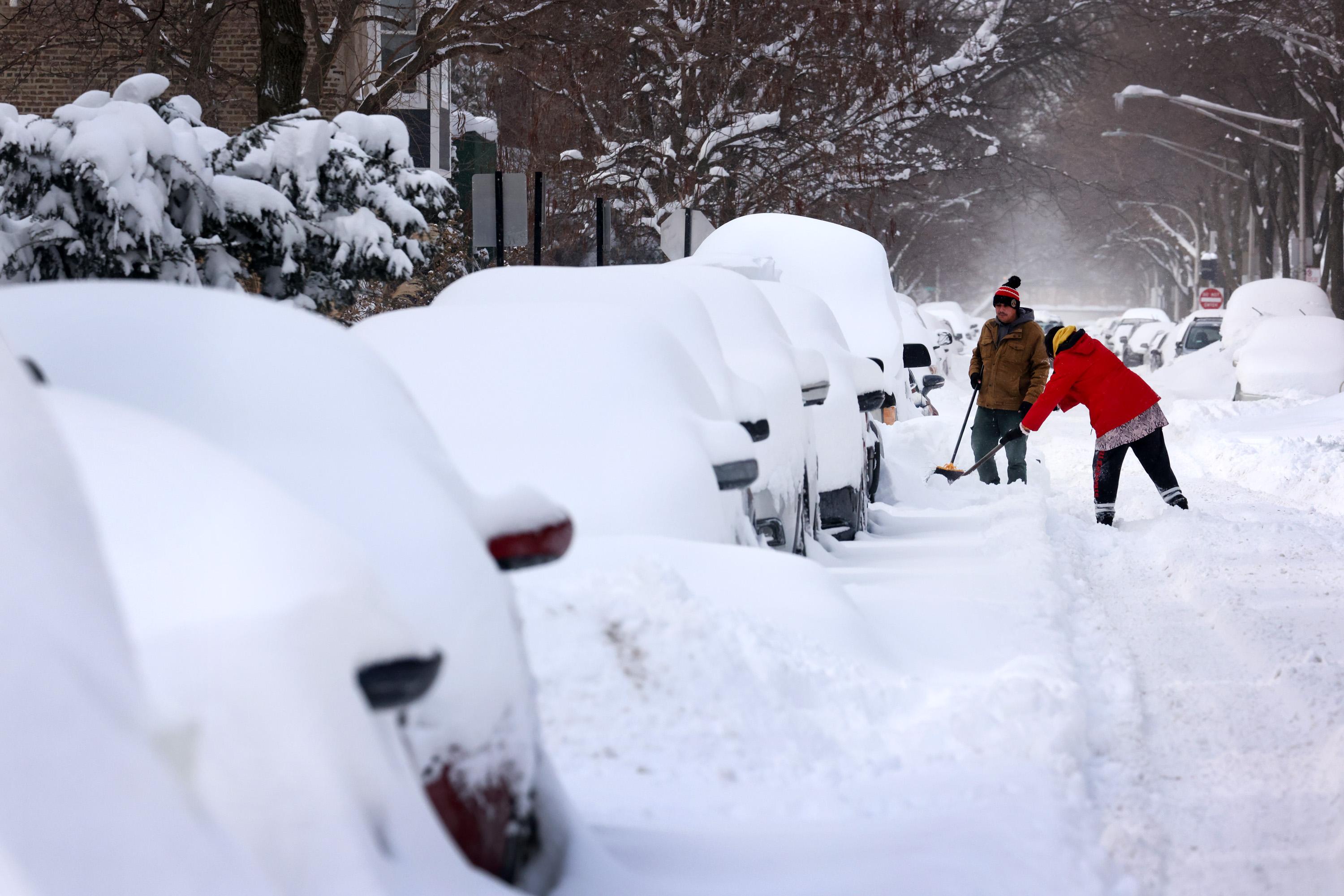
Scott Olson // Getty Images
#20. Northwest, Central, Eastern winter storm and cold wave
- Total cost (inflation-adjusted): $25.2 billion
- Total deaths: 262
- Begin date: Feb. 10, 2021
- End date: Feb. 19, 2021
The Feb. 2021 cold snap hit a large swath of North America, but was particularly catastrophic in Texas, where during the freeze.
As many as 4 million Lone Star State residents were also left without power—and therefore, heat—due to widespread power grid failures, which is thought to be at least partially responsible for many of the deaths. Costly damage was also sustained by infrastructure. Extreme cold was also felt across much of the country: in Minnesota, one weather station a reading of 50 degrees Fahrenheit below zero.
ANDREW CABALLERO-REYNOLDS/AFP // Getty Images
#19. Hurricane Laura
- Total cost (inflation-adjusted): $26.0 billion
- Total deaths: 42
- Begin date: Aug. 27, 2020
- End date: Aug. 28, 2020
Hurricane Laura is tied with the 1856 Last Island hurricane and Hurricane Ida as the most powerful on record to make landfall in Louisiana. It was the 12th named storm of the record-setting 2020 Atlantic hurricane season. It with 150 mph sustained winds and damaged innumerable buildings, homes, and wildlife areas.
Leif Skoogfors FEMA // Wikimedia Commons
#18. Hurricane Rita
- Total cost (inflation-adjusted): $27.2 billion
- Total deaths: 119
- Begin date: Sept. 20, 2005
- End date: Sept. 24, 2005
Hurricane Rita coastal region, as well as the Florida Panhandle, Alabama, Mississippi, and Arkansas.
The Category 3 hurricane brought strong storm surges of up to 15 feet, wind damage, and inland flooding, and spawned at least 92 tornadoes. At least 119 people were killed, but most of the deaths came as , causing a huge traffic jam—some stranded for an entire day.
JOSH EDELSON/AFP // Getty Images
#17. Western wildfires, California firestorm (2018)
- Total cost (inflation-adjusted): $27.8 billion
- Total deaths: 106
- Begin date: June 1, 2018
- End date: Dec. 31, 2018
2018's wildfire season stands as the deadliest, most destructive in California's recorded history. were recorded over the course of the year, eating nearly 1.9 million acres of land. A major contributor to the severity of the fires was an increased volume of dead tree fuel.
Sean Rayford // Getty Images
#16. Hurricane Florence
- Total cost (inflation-adjusted): $27.8 billion
- Total deaths: 53
- Begin date: Sept. 13, 2018
- End date: Sept. 16, 2018
Though Hurricane Florence made landfall as a Category 1 storm, it was slow-moving and large and caused intense wind and rain damage to the Carolinas. Florence brought forth 100 mph winds, storm surges as high as 9 to 13 feet, and 20 to 35 inches of rain. The for why Florence was so devastating and deadly—51 fatalities resulted—as flood-height records were surpassed.
Jocelyn Augustino FEMA // Wikimedia Commons
#15. Hurricane Wilma
- Total cost (inflation-adjusted): $27.9 billion
- Total deaths: 35
- Begin date: Oct. 24, 2005
- End date: Oct. 24, 2005
Category 3 touching down near Everglades City. Wilma—with its maximum sustained 120 mph winds and heavy rains—resulted in heavy flooding as it hurried across the state, touching on the Miami/Fort Lauderdale region and exiting to the coast again the same day.
At least 10 people were killed and 6 million lost power—the most in Florida history. Wilma was recorded as a Category 5 at the lowest pressure ever in the Atlantic Basin while still offshore and as the most rapidly intensifying with a 105 mph increase in wind speed in just a day.
ANDREW CABALLERO-REYNOLDS/AFP // Getty Images
#14. Hurricane Michael
- Total cost (inflation-adjusted): $29.0 billion
- Total deaths: 49
- Begin date: Oct. 10, 2018
- End date: Oct. 11, 2018
Hurricane Michael was the first Category 5 hurricane to hit the U.S. since 1992's Hurricane Andrew. The storm made around Mexico Beach, Florida, gradually moving inland and losing strength as it moved northeast to Georgia and southern Virginia.
Jocelyn Augustino FEMA // Wikimedia Commons
#13. Hurricane Ivan
- Total cost (inflation-adjusted): $31.6 billion
- Total deaths: 57
- Begin date: Sept. 12, 2004
- End date: Sept. 21, 2004
Category 3 Hurricane Ivan came ashore on the Gulf Coast of Alabama on Sept. 16, bringing 130 mph winds, heavy rains, storm surges, and . Ivan also spawned more than 100 tornadoes and waves that reached as high as 50 feet along the coasts of Mississippi, Alabama, and the Florida Panhandle.
Hurricane Ivan caused almost $28 billion in damage, and at least 57 people were killed. As a result of Hurricane Ivan and three other hurricanes in 2004, more than one out of every five houses in Florida sustained some kind of damage.
USDAgov // Flickr
#12. Central/Eastern drought and heat wave (1980)
- Total cost (inflation-adjusted): $37.7 billion
- Total deaths: 1,260
- Begin date: June 1, 1980
- End date: Nov. 30, 1980
The 1980 U.S. drought and heat wave covered a 42-day streak of 100-plus-degree days, making it the longest-lasting in the Central-Eastern region's history. The drought of 1980 tied or met 29 daily high temperature records and hit many other records. It also caused significant damage to agriculture, and led to at least 1,200 deaths.
Another remarkable thing about the 1980 drought was , which became obsessive. As the U.S. media ran out of coverage ideas while the drought and heat wave dragged on for months, media crews from all over the world stepped into the scene.
John Moore // Getty Images
#11. US drought and heat wave (2012)
- Total cost (inflation-adjusted): $38.7 billion
- Total deaths: 123
- Begin date: Jan. 1, 2012
- End date: Dec. 31, 2012
Since the Dust Bowl of the 1930s, the U.S. drought and heatwaves in 2012 were . About was affected by moderate to extreme drought. Many parts of the country saw huge agricultural losses, and the drought caused 123 direct deaths.
James L. Harper Jr. U.S. Air Force // Wikimedia Commons
#10. Hurricane Ike
- Total cost (inflation-adjusted): $40.2 billion
- Total deaths: 112
- Begin date: Sept. 12, 2008
- End date: Sept. 14, 2008
Category 2 Hurricane Ike—the—struck the Texas coastline on Sept. 13. Ike's tropical storm winds exceeded Hurricane Katrina's, and its massive size likened it to a Category 5 storm with 15-foot waves pummelling the Gulf Coast from Texas to Florida and spawning 29 tornadoes.
Ike affected 11 states resulting in 103 direct fatalities; a month after the storm passed, 157 people were still missing.
Andrea Booher FEMA // Wikimedia Commons
#9. Midwest flooding (1993)
- Total cost (inflation-adjusted): $43.0 billion
- Total deaths: 48
- Begin date: June 27, 1993
- End date: Aug. 15, 1993
In the summer of 1993, the Midwest and the central United States went through the most devastating and costly non-tropical, inland flooding on record. More than were drowned in water.
Hundreds of levees broke along the Mississippi and Missouri rivers, . The flooding had significant impacts on agriculture and infrastructure but also halted all railroad traffic across the Midwest.
In addition, 10 commercial airports flooded, and some places along the Mississippi River remained flooded for months.
USDAgov // Flickr
#8. US drought and heat wave (1988)
- Total cost (inflation-adjusted): $50.6 billion
- Total deaths: 454
- Begin date: June 1, 1988
- End date: Aug. 31, 1988
One of the worst droughts since the 1930s Dust Bowl occurred in the summer of 1988 when at least suffered sweltering temperatures and lack of rain.
The drought lasted from June until the end of August and resulted in , as well as significant losses in agriculture and related industries. The Mississippi River barely trickled, and temperatures rocketed up to 110 degrees in some areas.
Bob Epstein FEMA // Wikimedia Commons
#7. Hurricane Andrew
- Total cost (inflation-adjusted): $55.9 billion
- Total deaths: 61
- Begin date: Aug. 23, 1992
- End date: Aug. 27, 1992
Category 5 Hurricane Andrew slammed Florida in August 1992 with 175 mph winds that damaged or destroyed more than 125,000 homes, .
Some 160,000 people were displaced in Miami-Dade County alone. Hurricane Andrew is one of only four Category 5 hurricanes to affect the U.S. mainland and resulted in the deaths of 61 people. It also destroyed Homestead Air Force Base. The positives to come out of the disaster were , the insurance industry, and the Federal Emergency Management Agency.
Mark Wolfe FEMA // Wikimedia Commons
#6. Hurricane Irma
- Total cost (inflation-adjusted): $59.5 billion
- Total deaths: 97
- Begin date: Sept. 6, 2017
- End date: Sept. 12, 2017
Category 4 Hurricane Irma hit the Florida Keys destroying or damaging more than 80% of its buildings. As Irma moved along the coast, the 185 mph winds, tornadoes, and storm surges hit nine states.
Florida and South Carolina were the most affected. Jacksonville and Charleston had historic levels of storm surge, which caused severe coastal flooding that left millions without electricity. Irma was both the documented outside of the Gulf of Mexico and the Caribbean Sea and the , with sustained 185 mph winds over 37 hours.
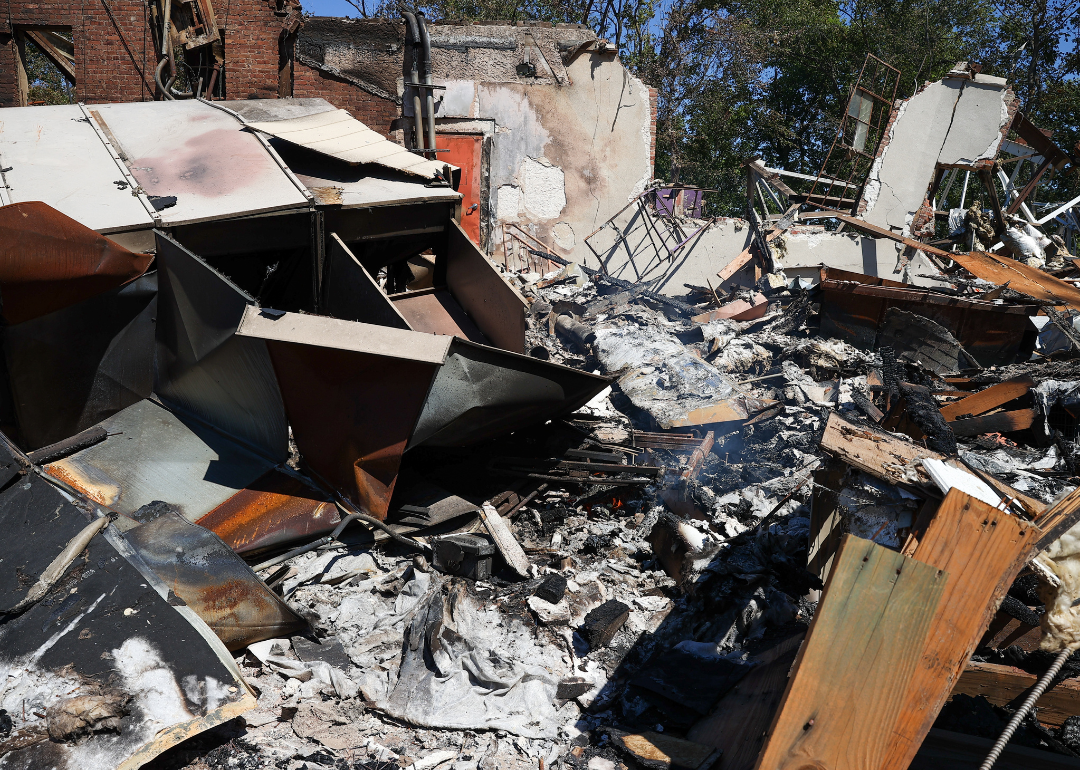
Tayfun Coskun/Anadolu Agency via Getty Images
#5. Hurricane Ida
- Total cost (inflation-adjusted): $78.7 billion
- Total deaths: 96
- Begin date: Aug. 29, 2021
- End date: Sept. 1, 2021
Damage from Hurricane Ida spanned from New Orleans all the way to New York.
Originally making landfall in the Gulf of Mexico, the from the storm was felt in Louisiana, Mississippi, and Alabama. In New Orleans, the entire city was and sustained severe damage, though it was saved from even worse flooding by levees fortified after Hurricane Katrina.
The Northeast, including , also sustained immense damage and deaths.
DVIDSHUB // Wikimedia Commons
#4. Hurricane Sandy
- Total cost (inflation-adjusted): $82.0 billion
- Total deaths: 159
- Begin date: Oct. 30, 2012
- End date: Oct. 31, 2012
Hurricane Sandy——struck at the end of October 2012, directly affecting 24 states and all of the U.S. Eastern seaboard, wreaking havoc from flash flooding and storm surges to blizzard-like conditions.
Sandy resulted in 159 deaths and is the storm in U.S. history. The New York Stock Exchange was forced to close for two consecutive business days for the first time since 1888, and a 14-foot surge caused Manhattan's subway system to because tunnels were flooded. More than 8.5 million people lost power, and more than 20,000 flights were cancelled.
Yuisa Rios FEMA // Wikimedia Commons
#3. Hurricane Maria
- Total cost (inflation-adjusted): $107.1 billion
- Total deaths: 2,981
- Begin date: Sept. 19, 2017
- End date: Sept. 21, 2017
In September 2017, Category 4 Hurricane Maria affected many parts of the United States, but the impact was felt the most in Puerto Rico. After claiming the lives of at least 2,981 people and resulting in more than $90 billion in damage, Hurricane Maria became and costliest climate disasters in U.S. history.
The mass flooding and mudslides in Puerto Rico devastated the country's economy, infrastructure, and living conditions. The hurricane also was one of most rapidly intensifying storms, going from a tropical depression to a Category 5 Hurricane in less than 54 hours.
Daniel Martinez Texas National Guard // Wikimedia Commons
#2. Hurricane Harvey
- Total cost (inflation-adjusted): $148.8 billion
- Total deaths: 89
- Begin date: Aug. 25, 2017
- End date: Aug. 31, 2017
At the end of August 2017, Category 4 Hurricane Harvey made landfall near Rockport, Texas, and heavy winds, and dumping 30 to 50 inches of rain on 13 million people in Texas, Louisiana, Mississippi, Tennessee, and Kentucky.
In Houston—the nation's fourth-largest city—at least 3,900 people still had no power almost three weeks after the storm, and national gas prices rose as 25% of oil and gas production was shut down in the region. At one point, 75% of Harris County, which encompasses Houston, was under 1.5 feet of water. Massive flooding displaced over 30,000 people and damaged or destroyed over 200,000 homes and businesses.
Jocelyn Augustino FEMA // Wikimedia Commons
#1. Hurricane Katrina
- Total cost (inflation-adjusted): $186.3 billion
- Total deaths: 1,833
- Begin date: Aug. 25, 2005
- End date: Aug. 30, 2005
On Aug. 29, 2005, Hurricane Katrina—the—made landfall near Grand Isle, Louisiana, as a Category 3 storm with 127 mph winds and severe storm surges, some in excess of 30 feet. Katrina affected 90,000 square miles and at least eight states, with most of the damage occurring in Mississippi, Alabama, and Louisiana—particularly New Orleans.
At least 50 levees failed in New Orleans resulting in devastating mass flooding. By the end, , including 1,577 in Louisiana, and more than 1 million people had been displaced. Two of the region's biggest industries—oil and gas—suffered greatly, and tourism to the coastal communities died as infrastructure continued to erode. From April 2000 to July 2006, New Orleans' population.
